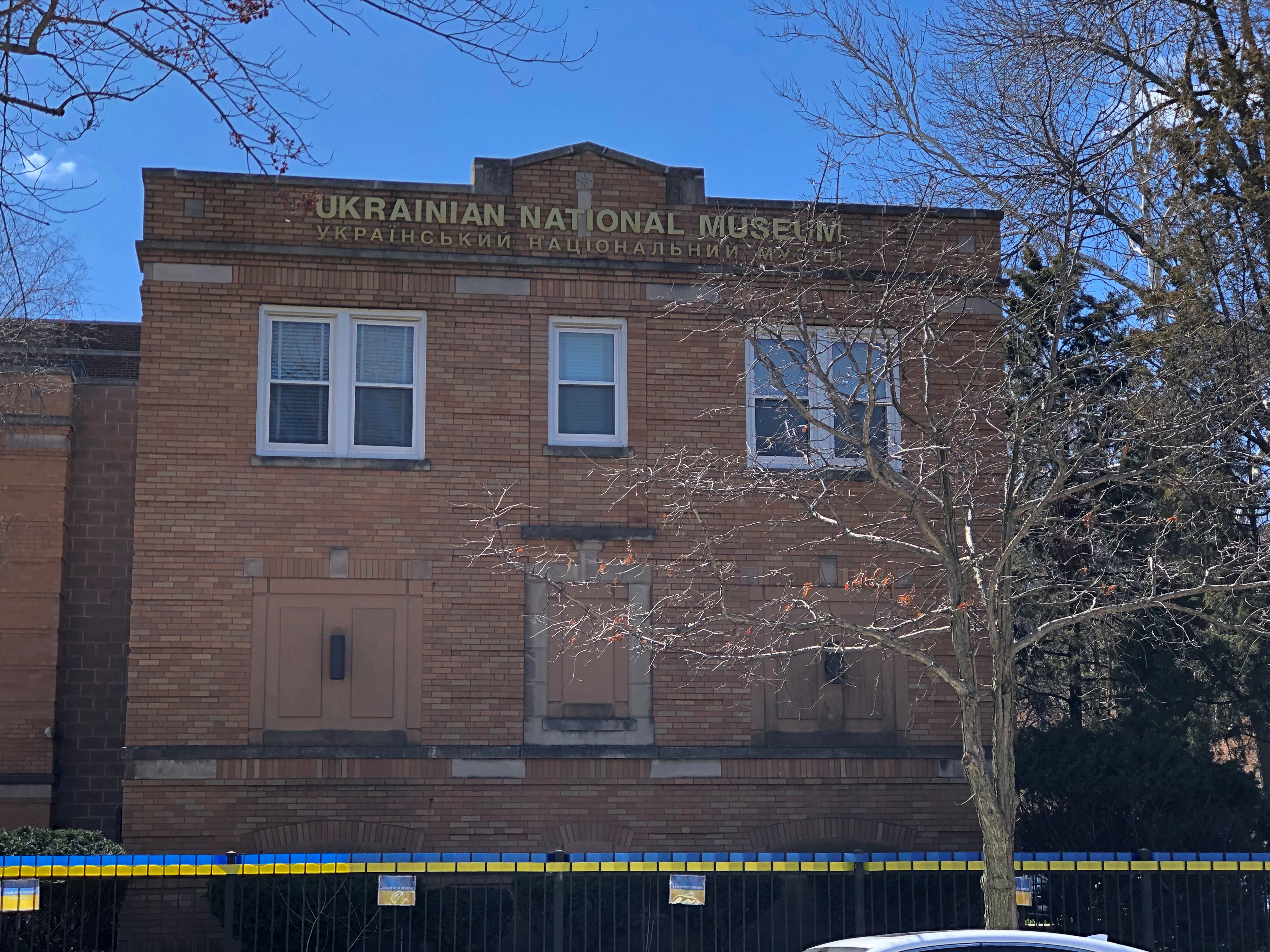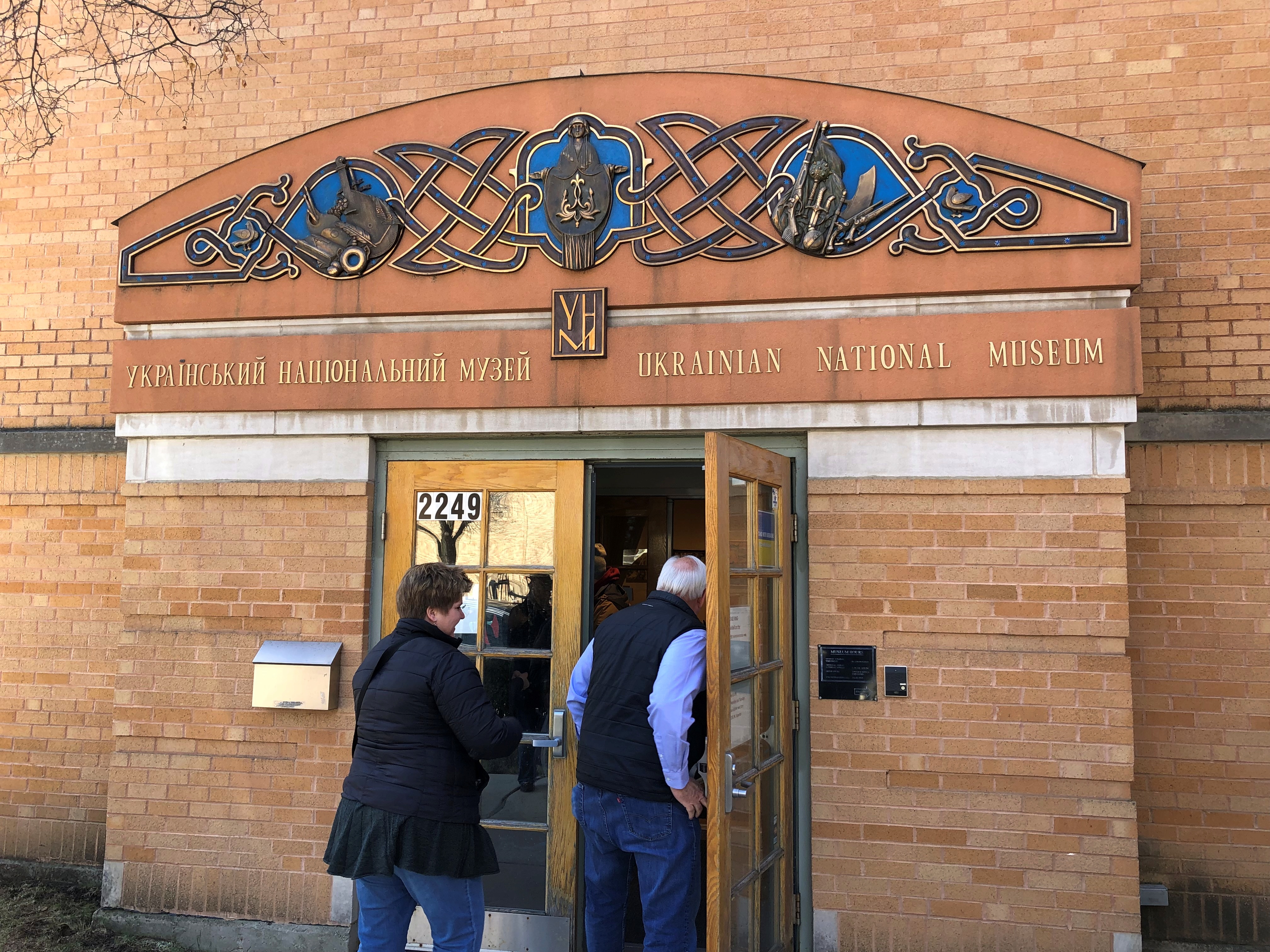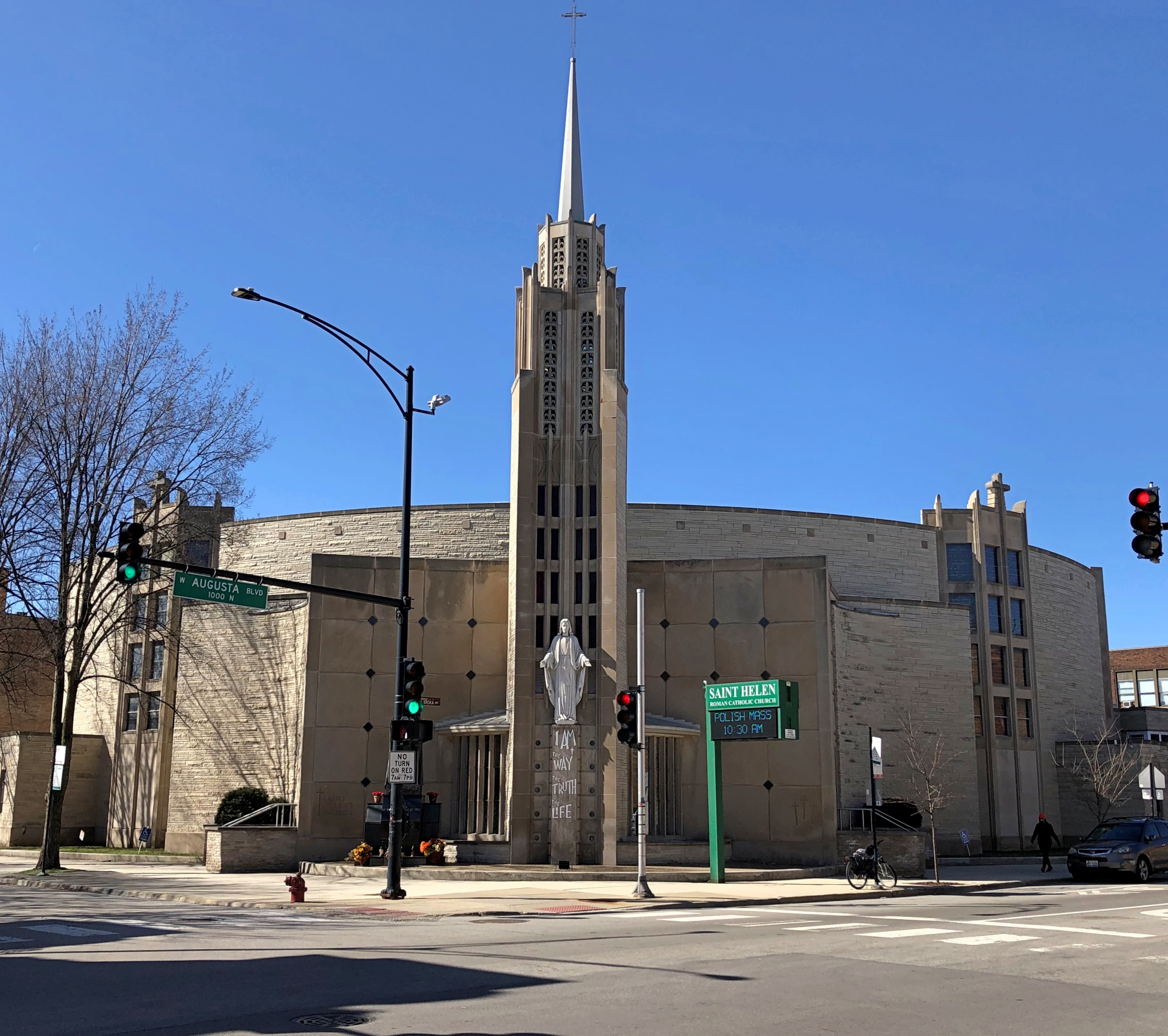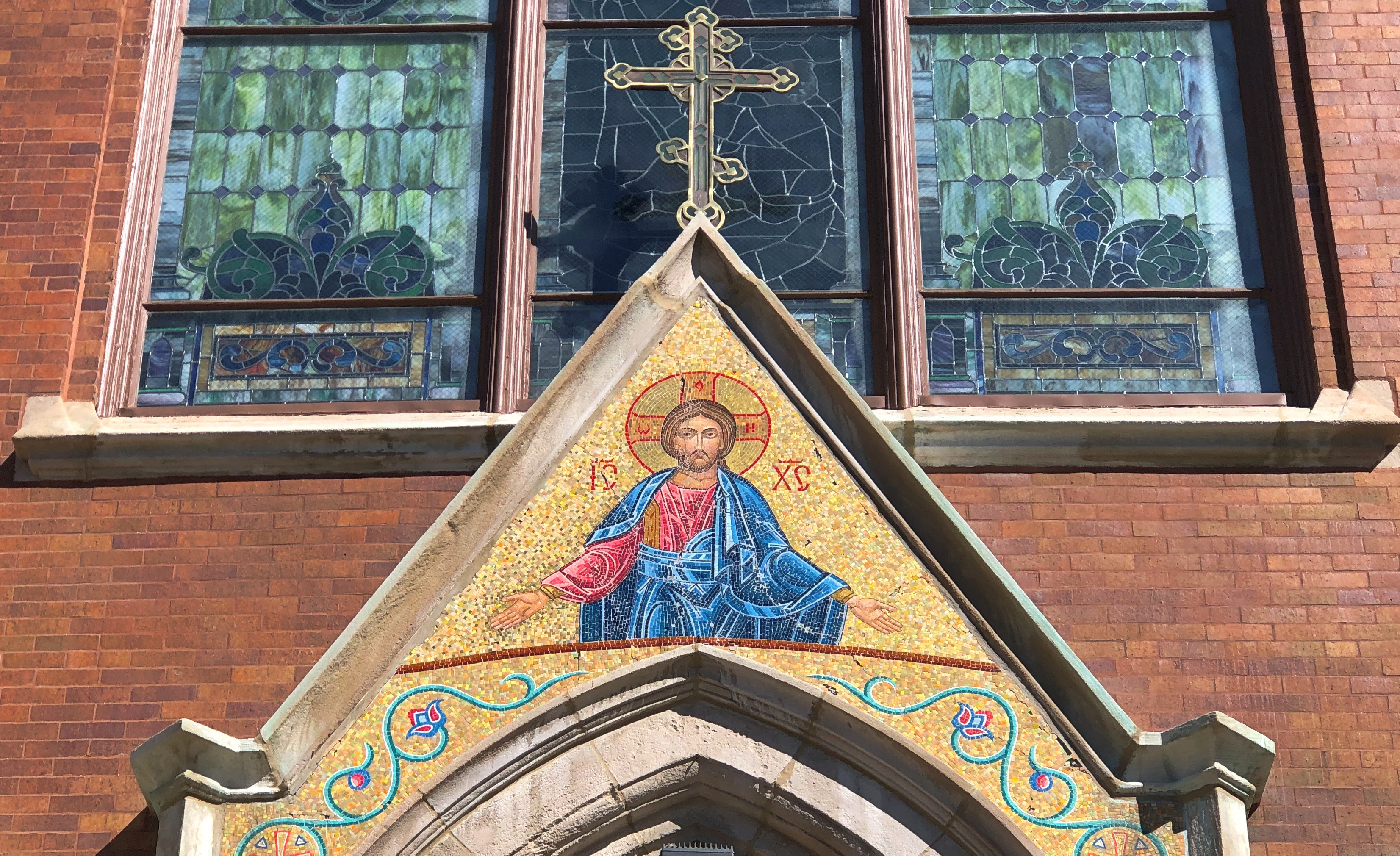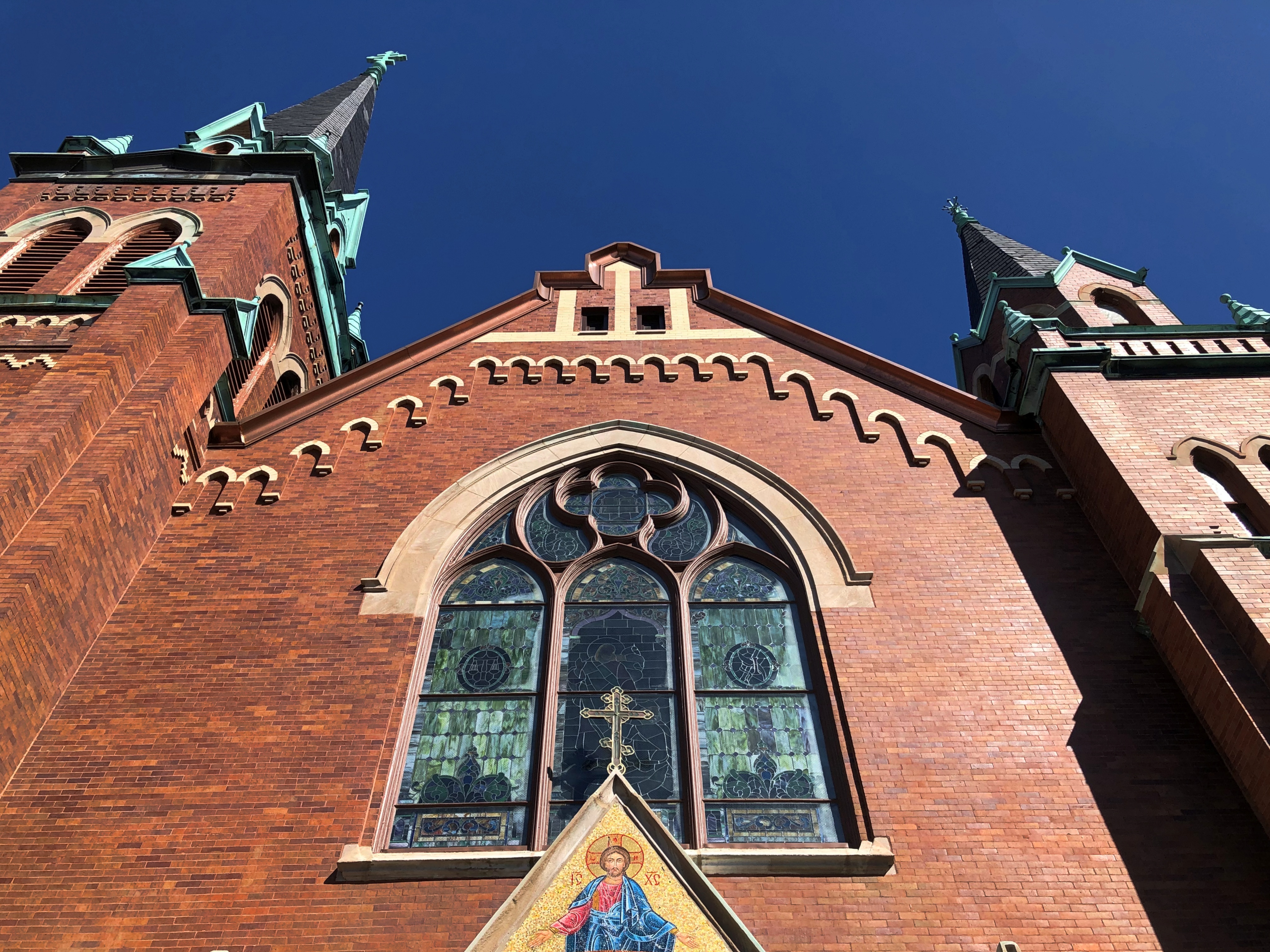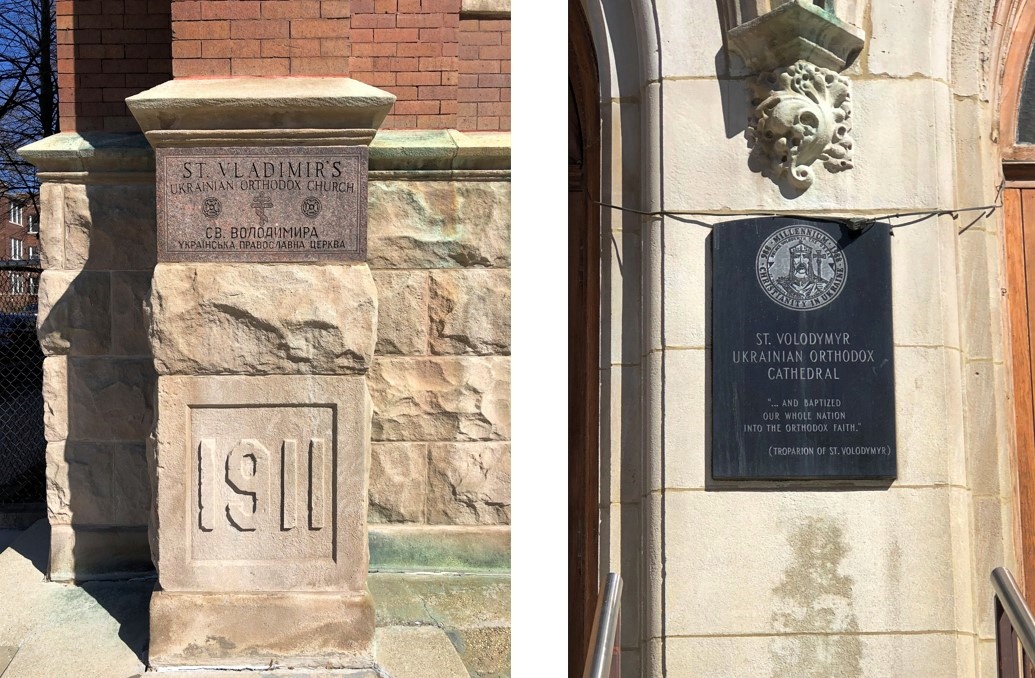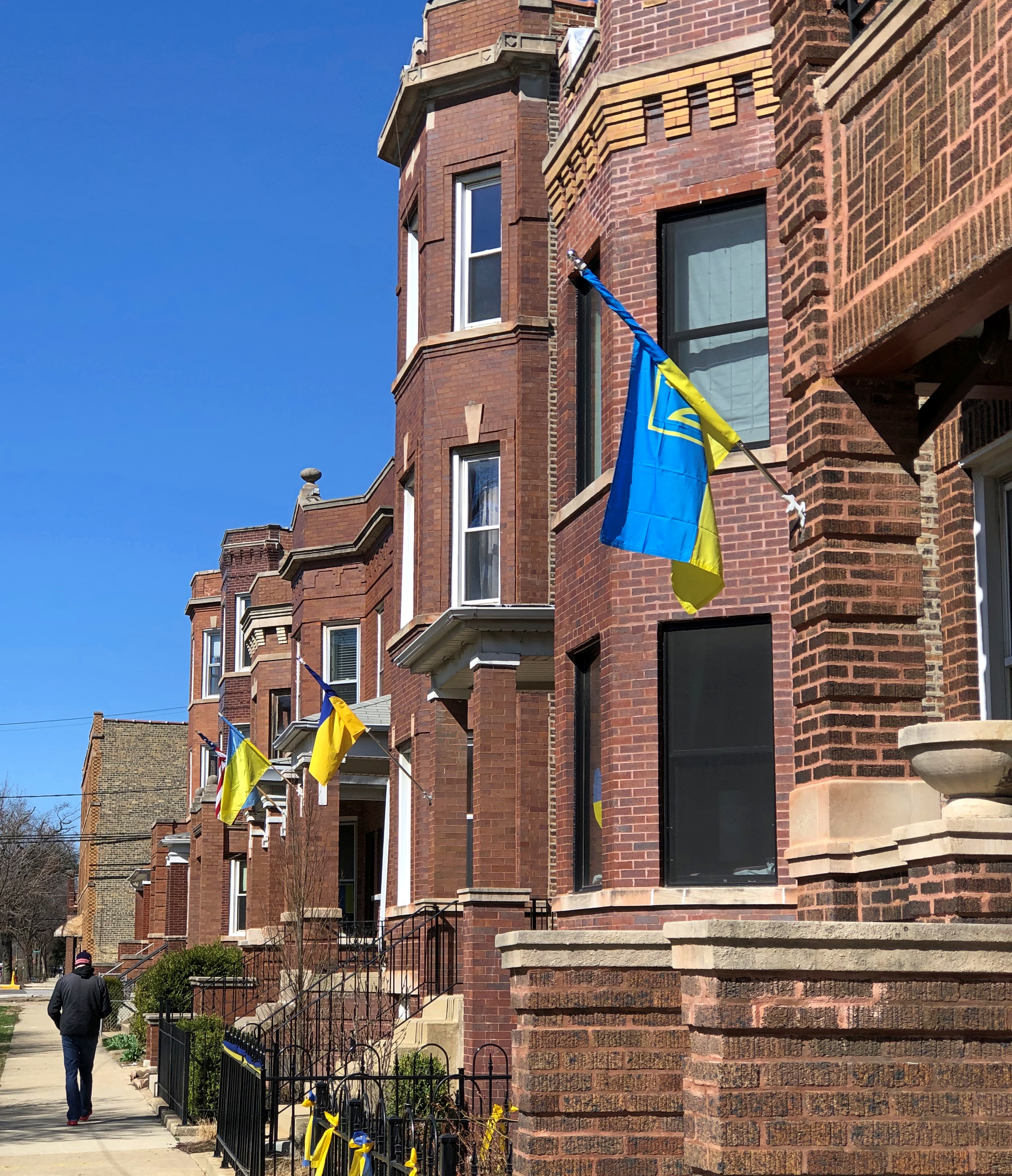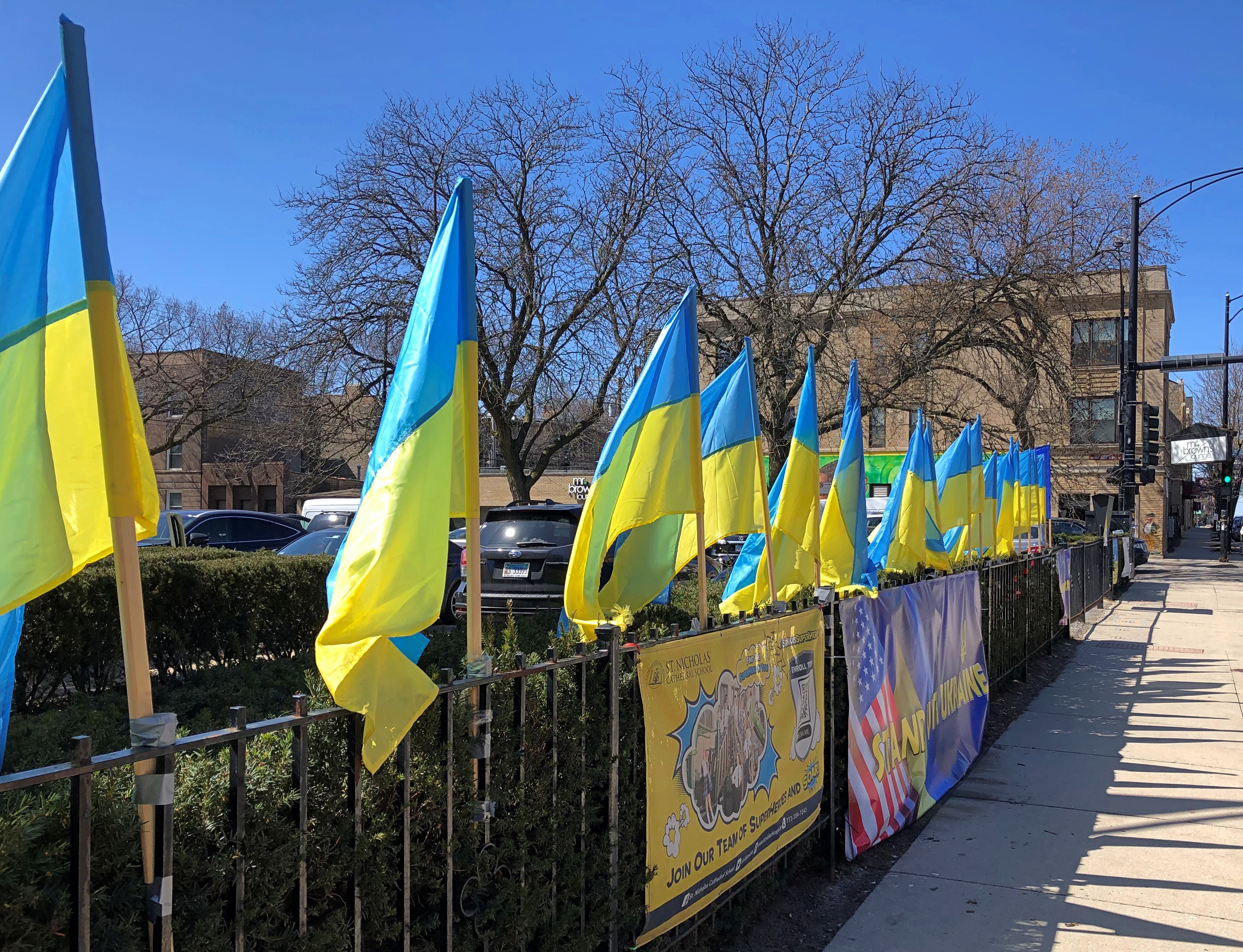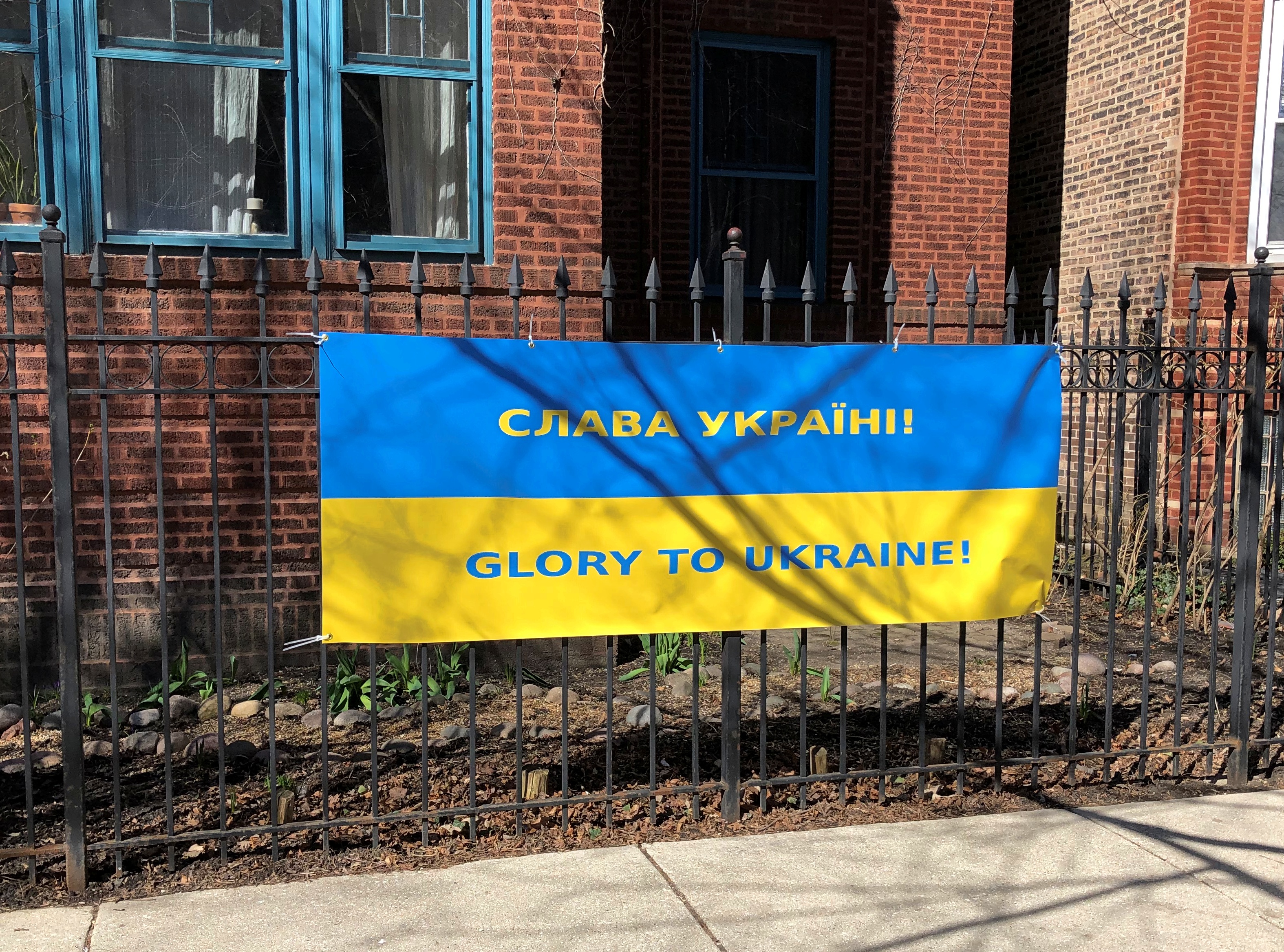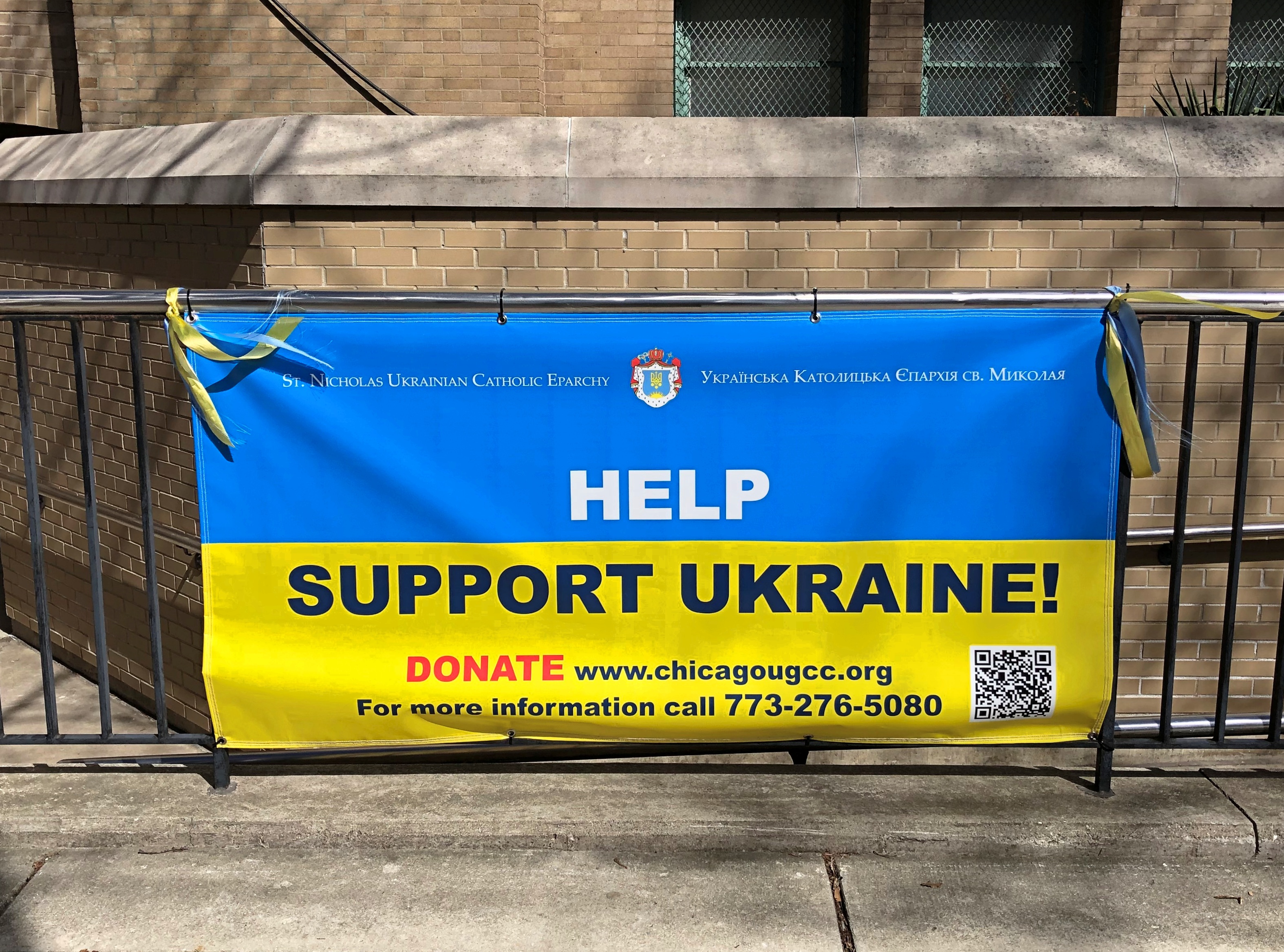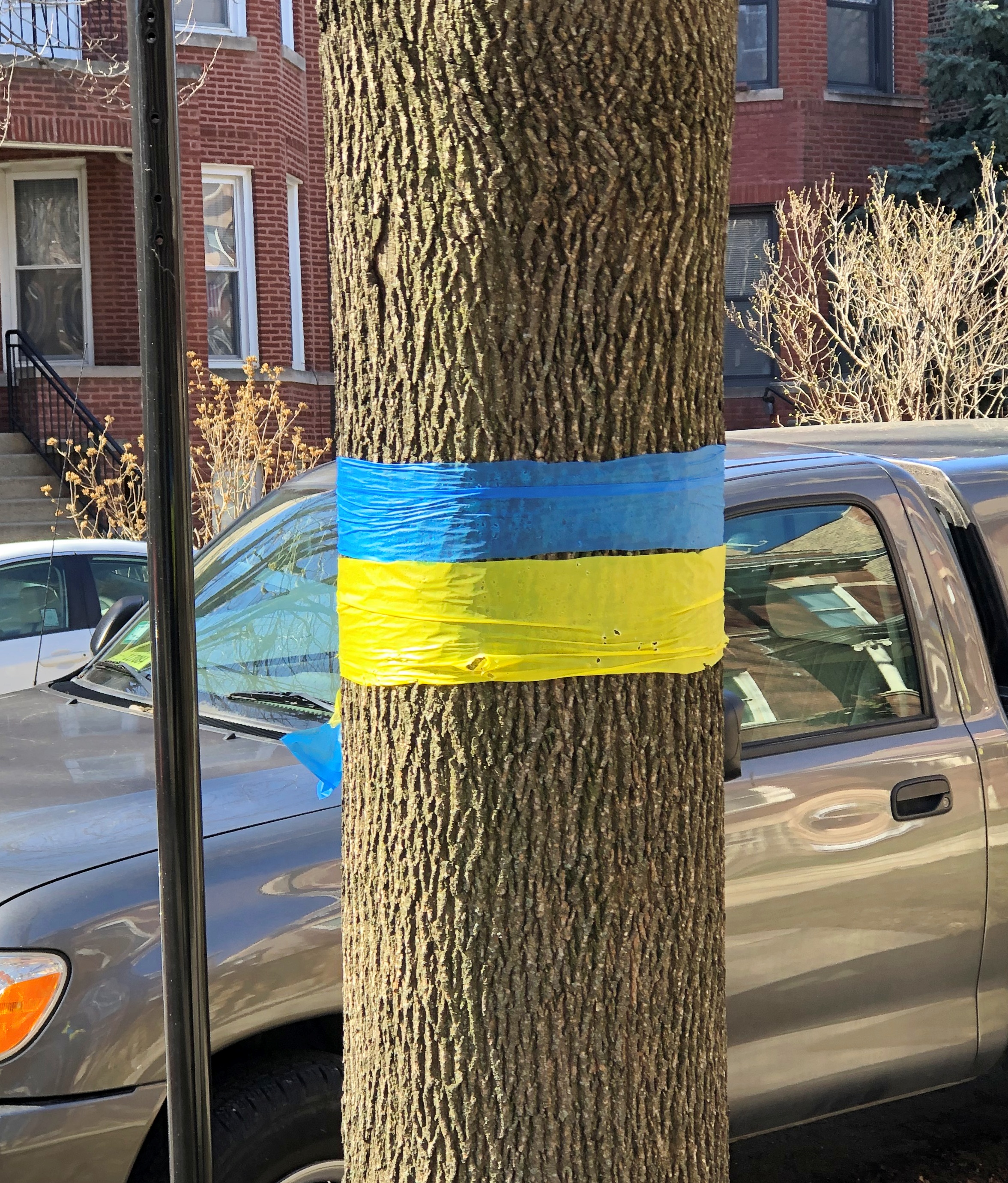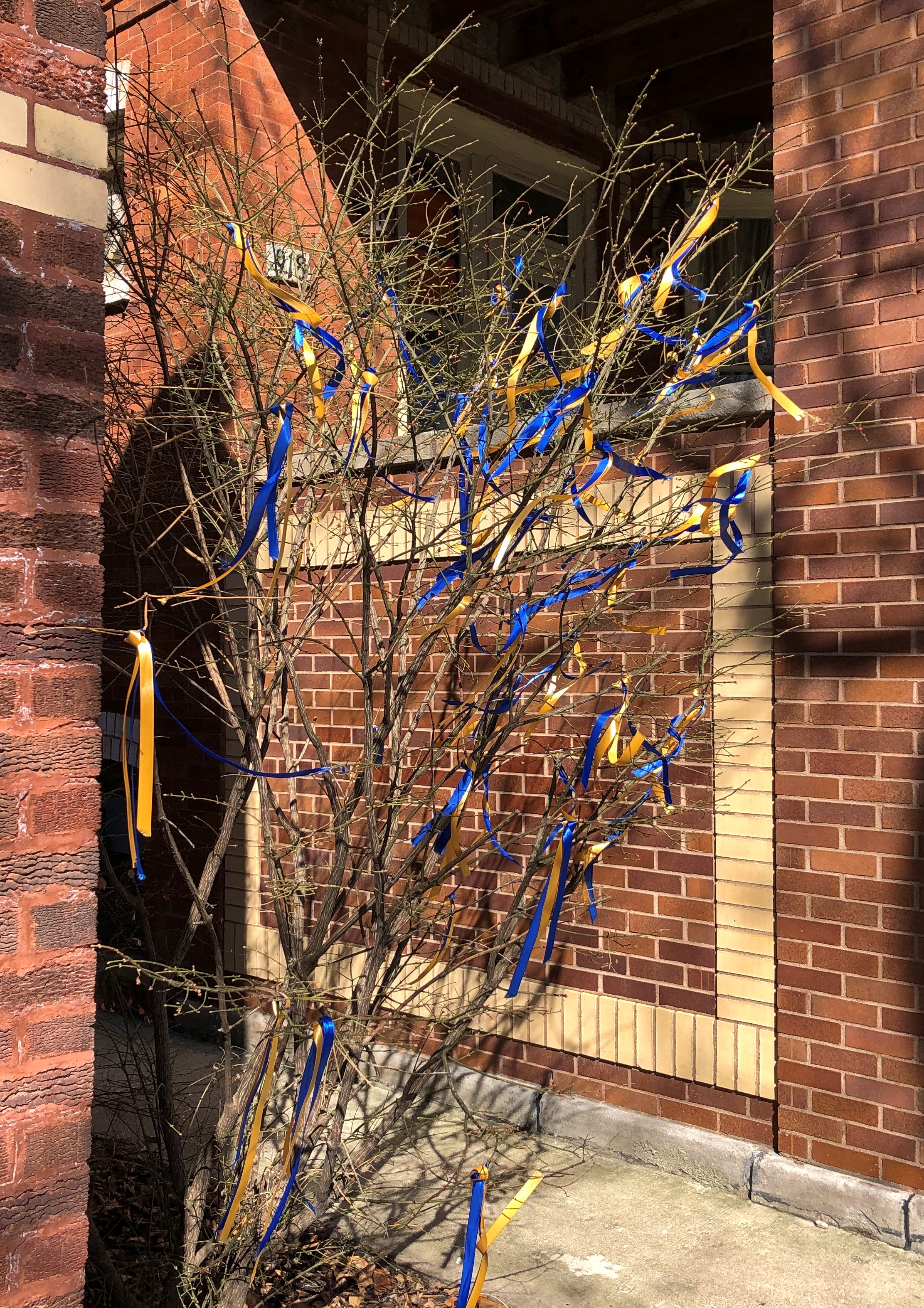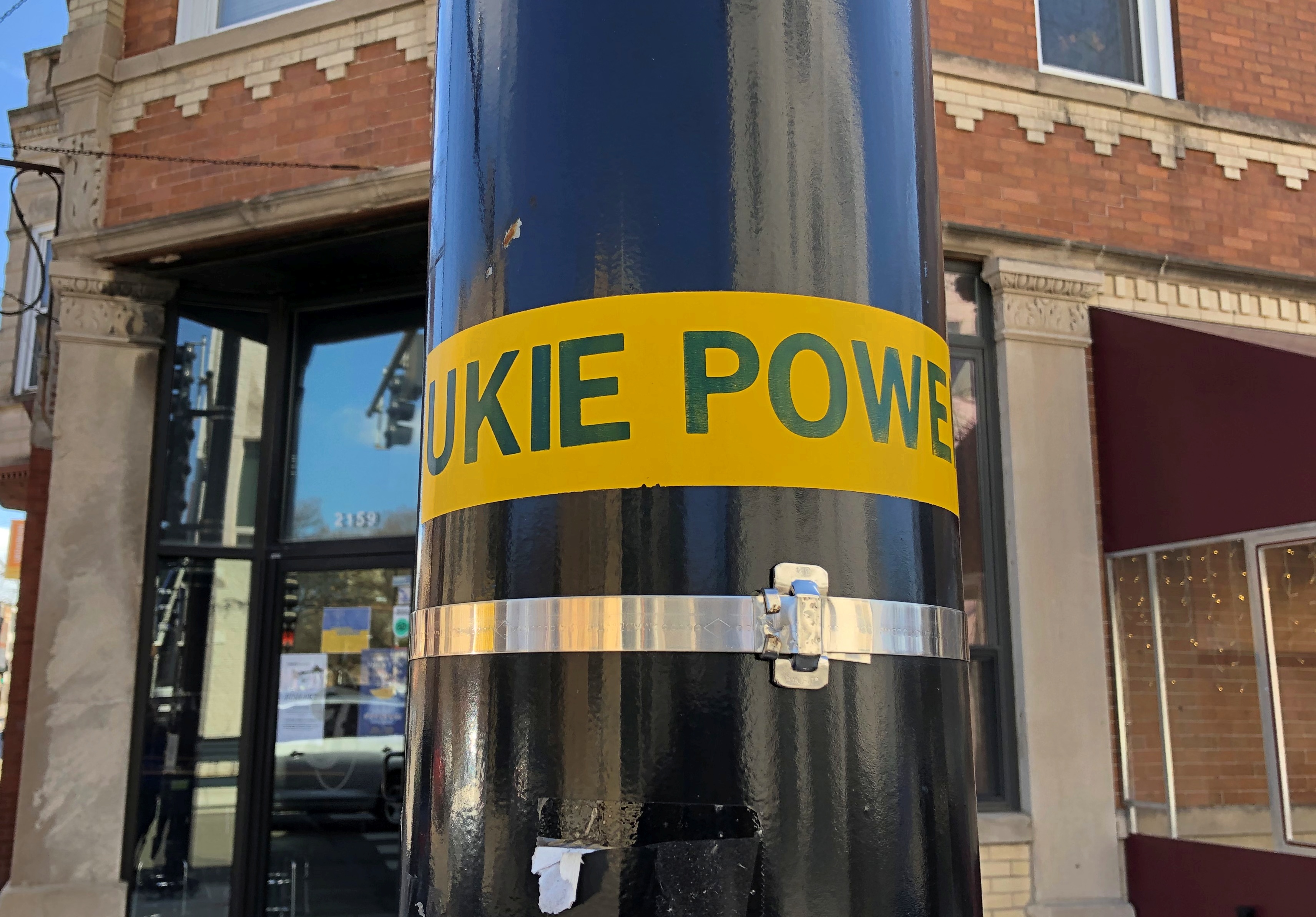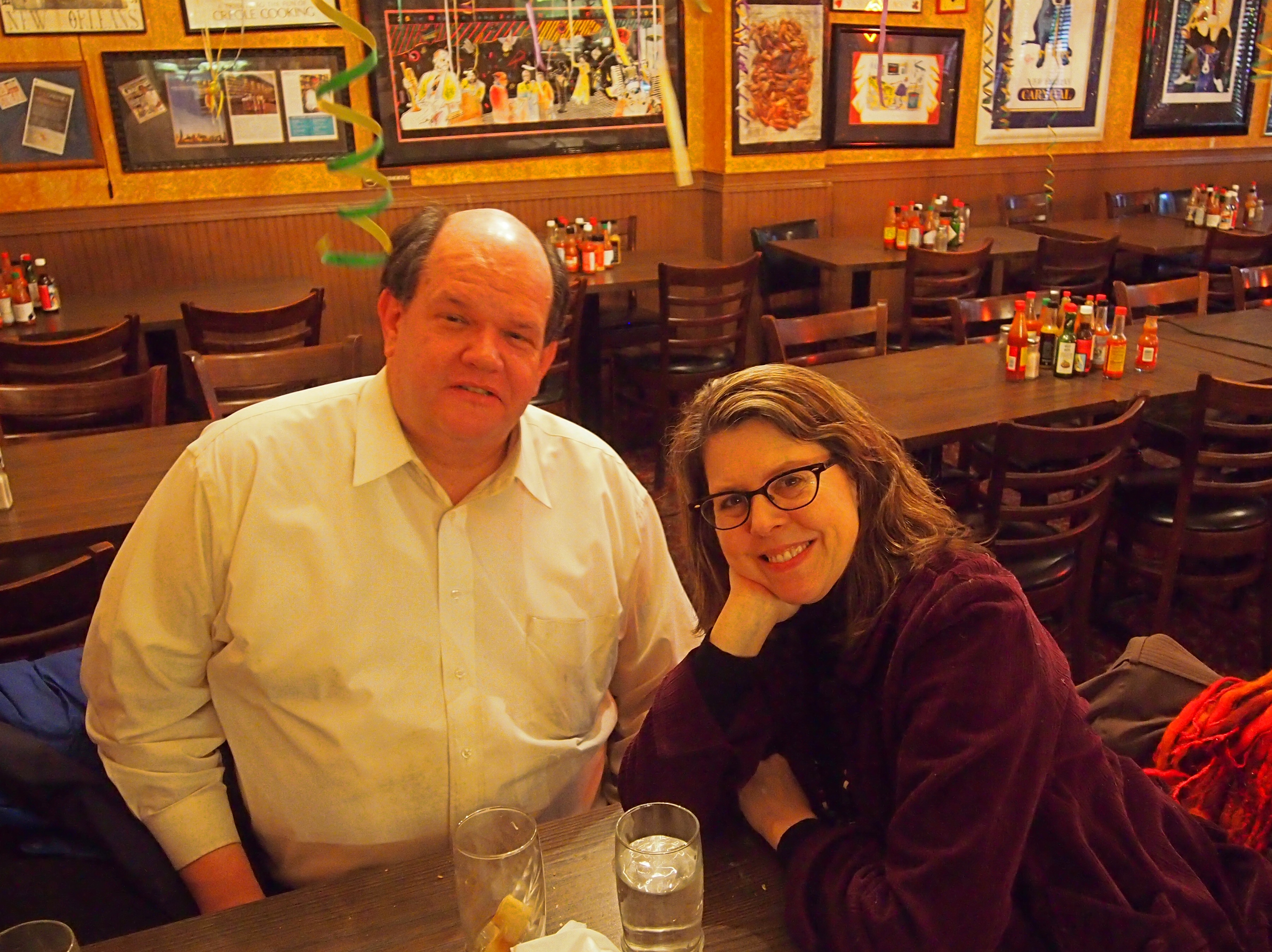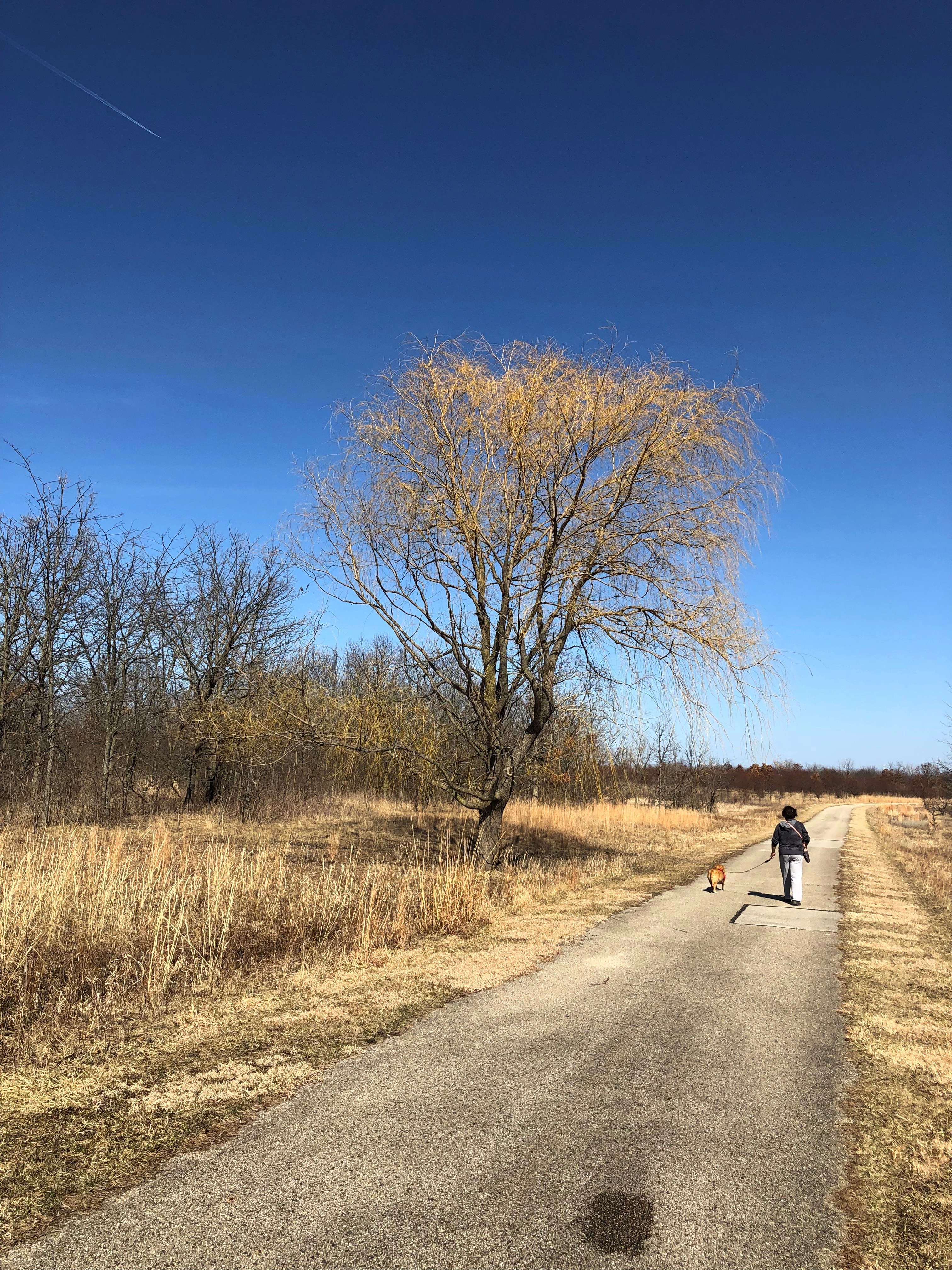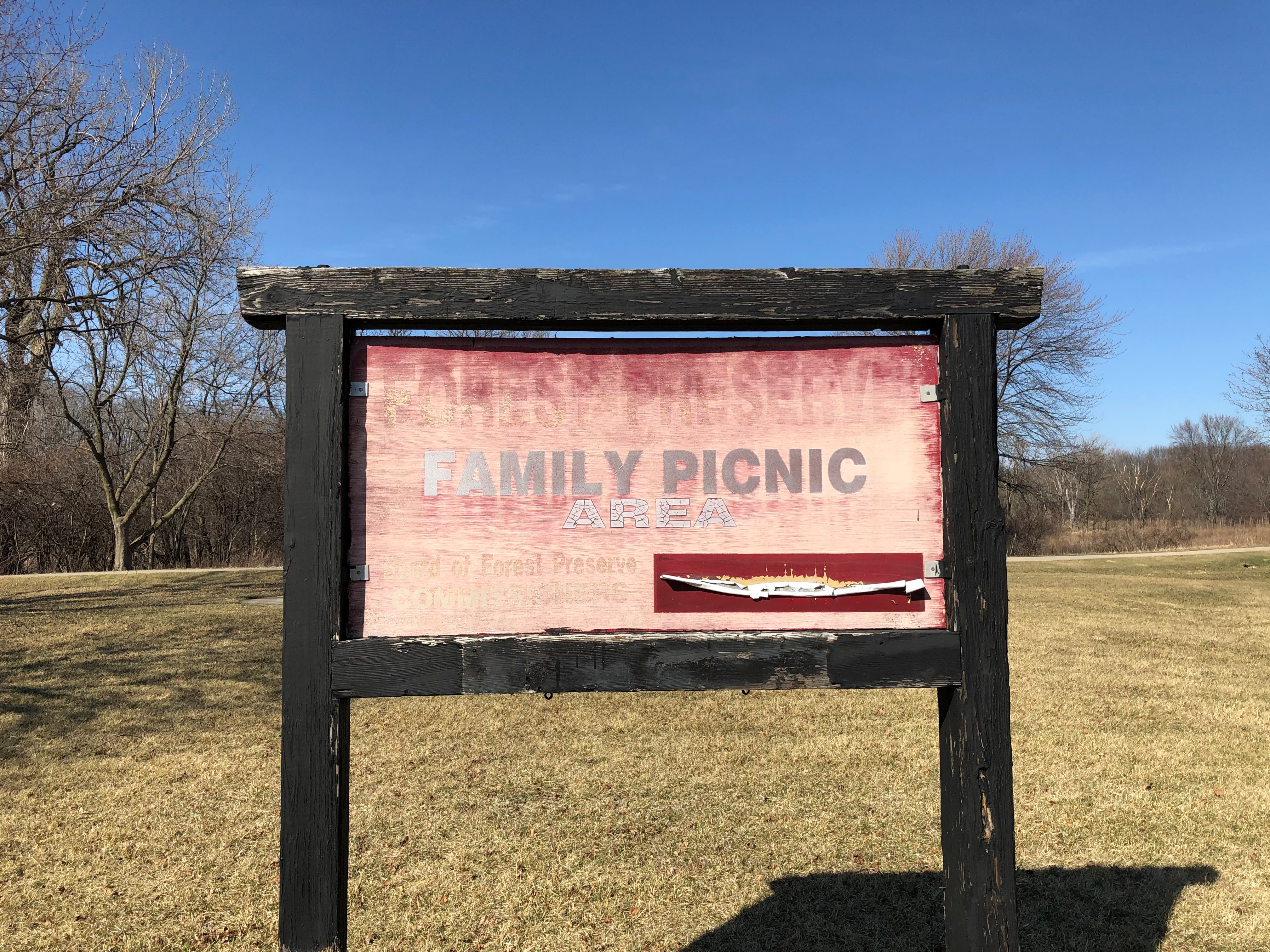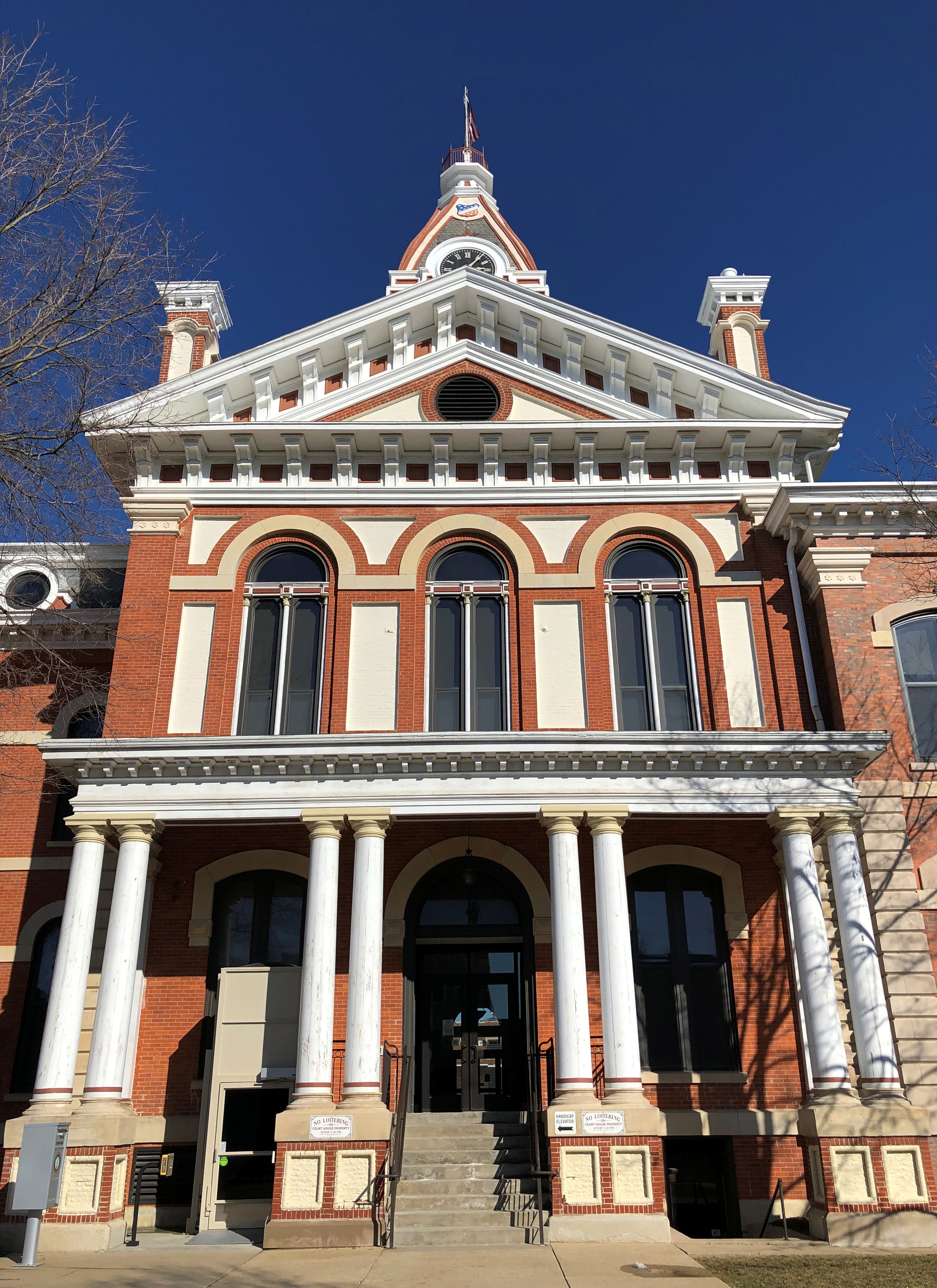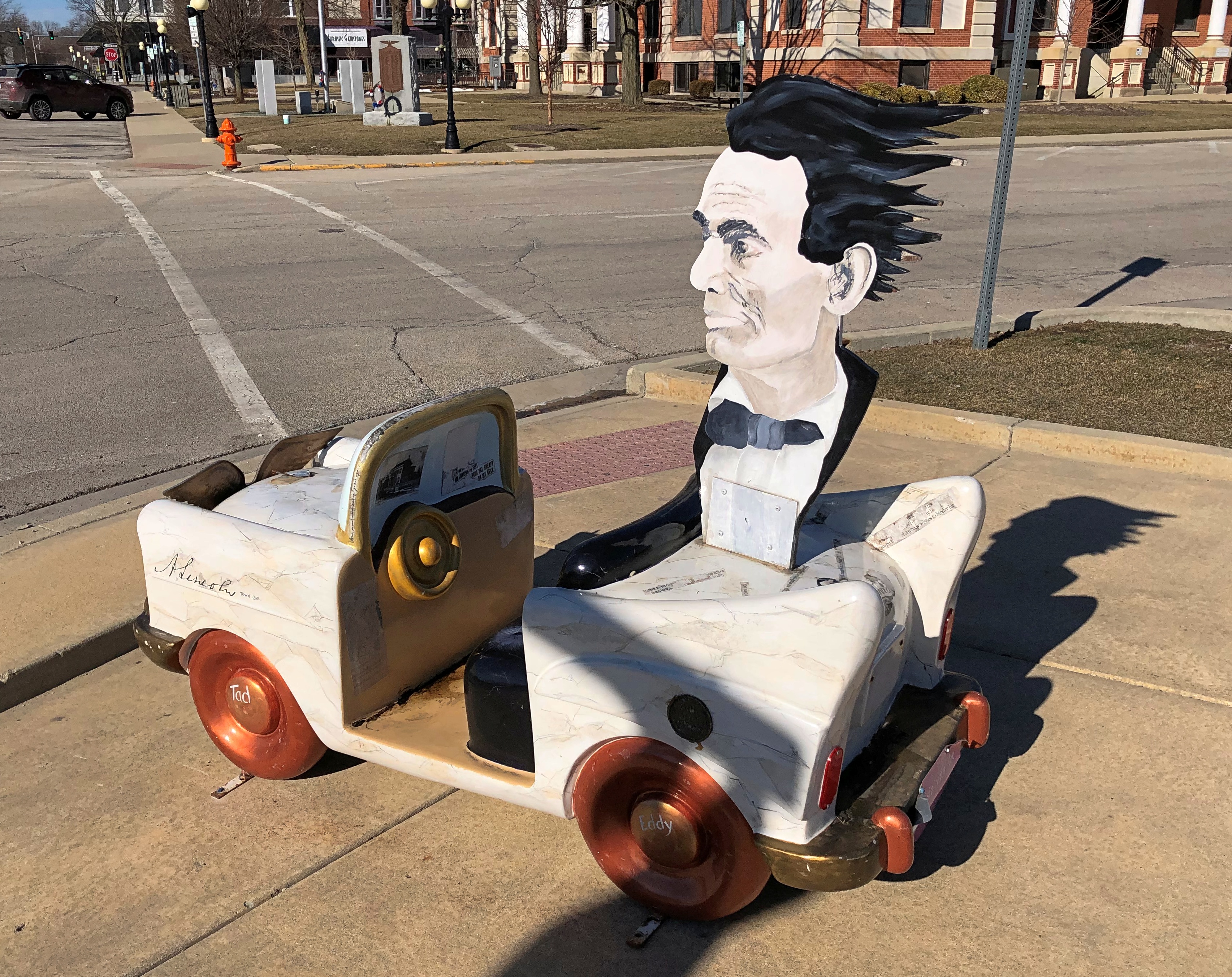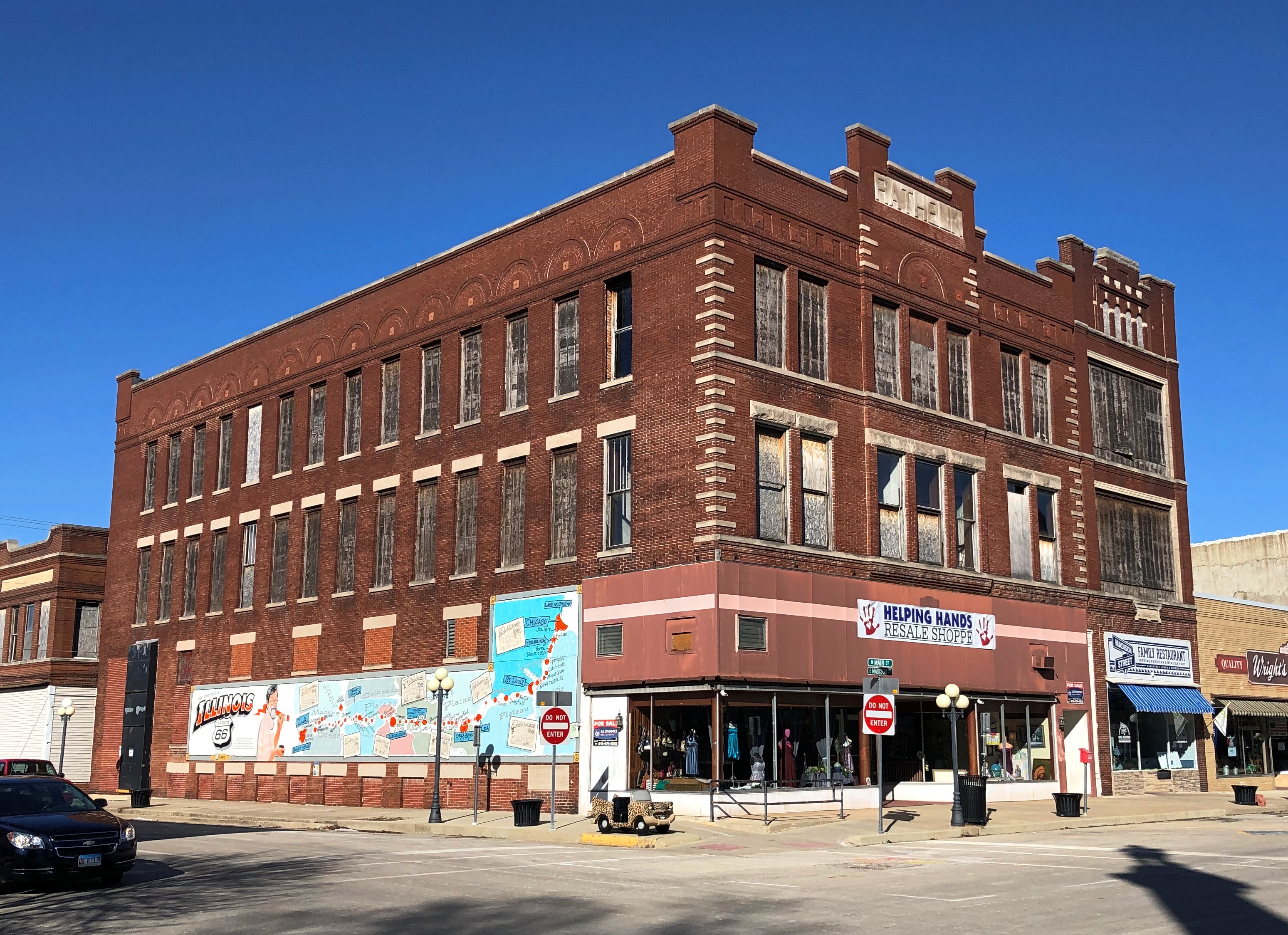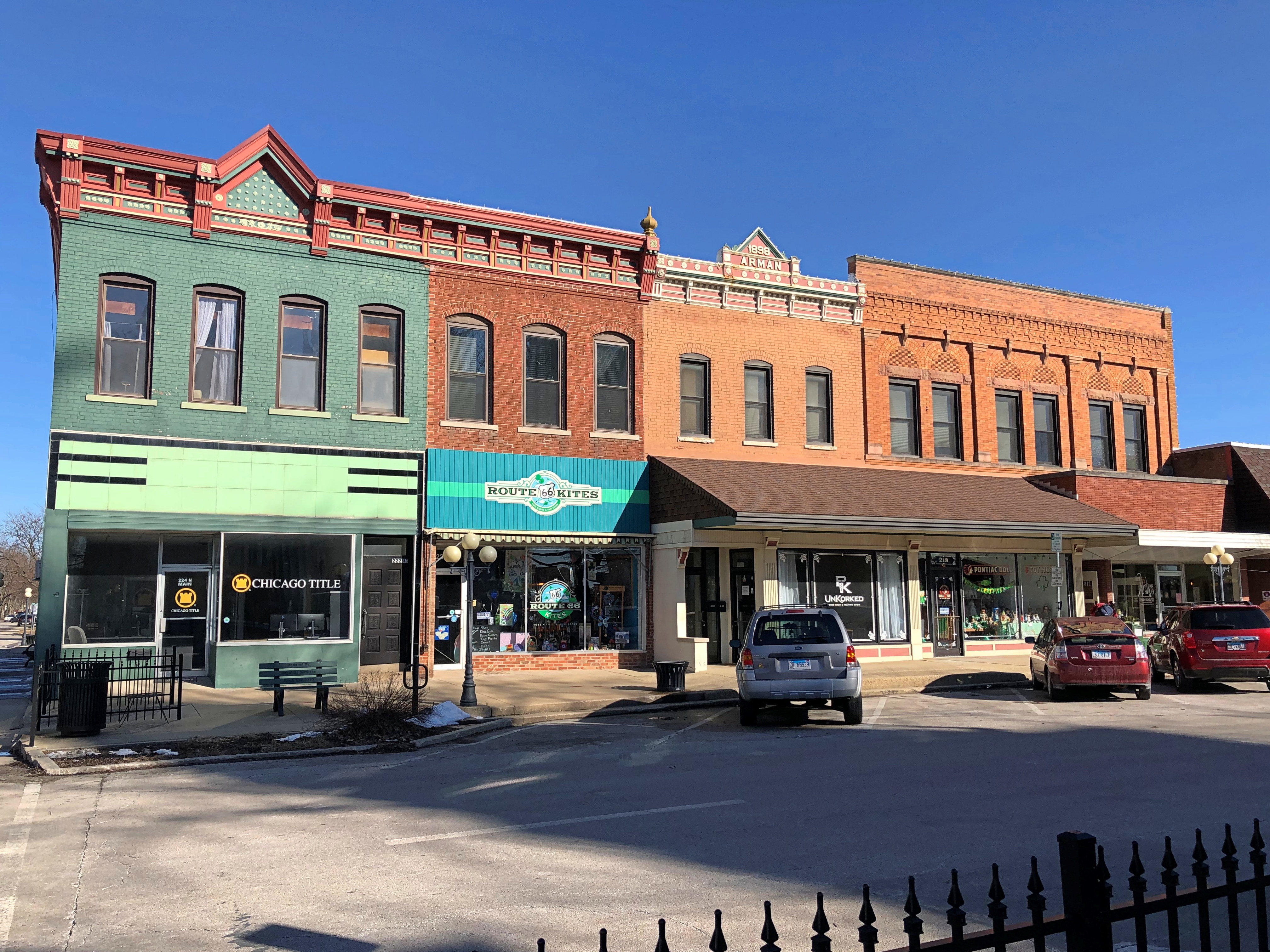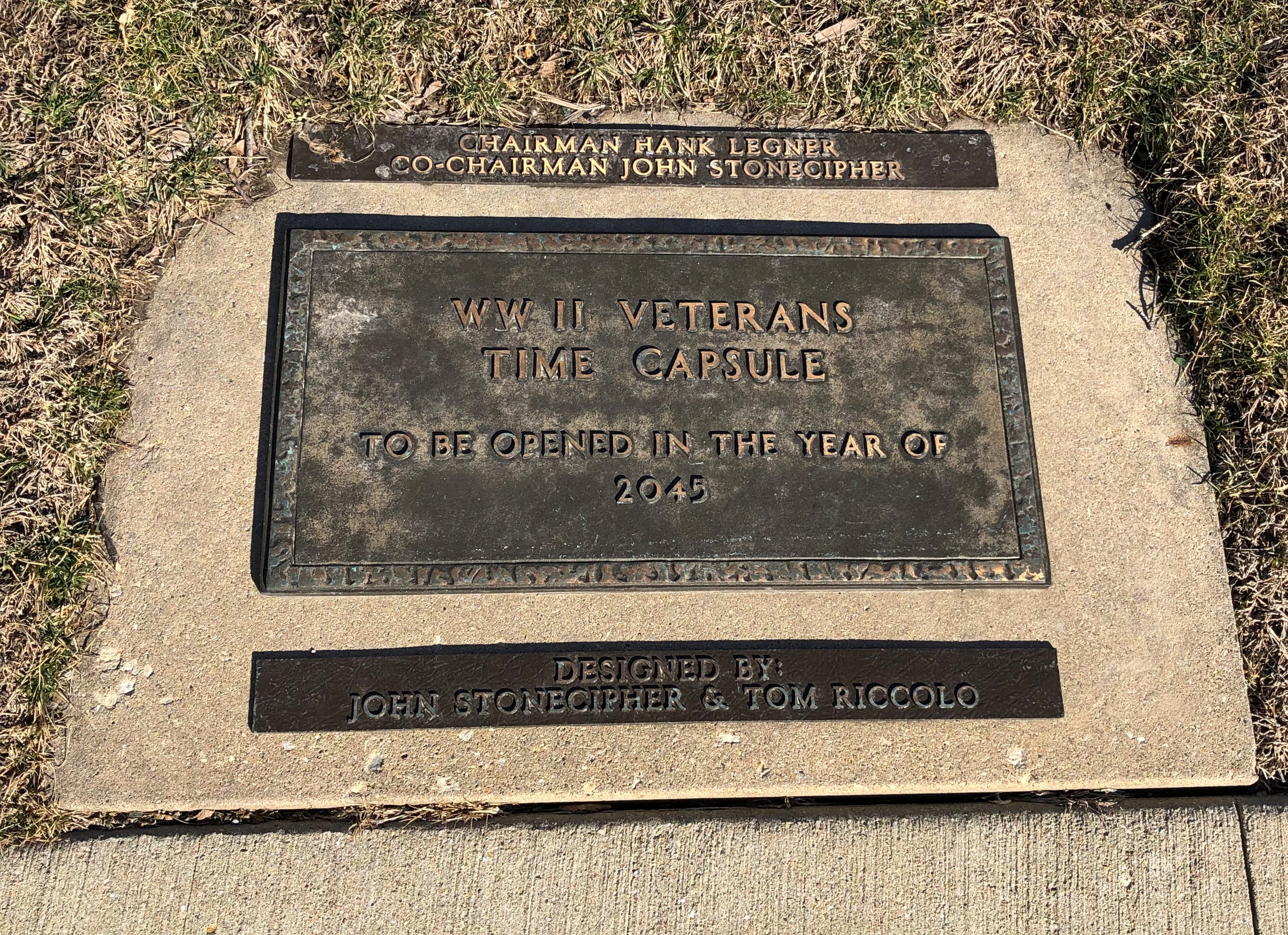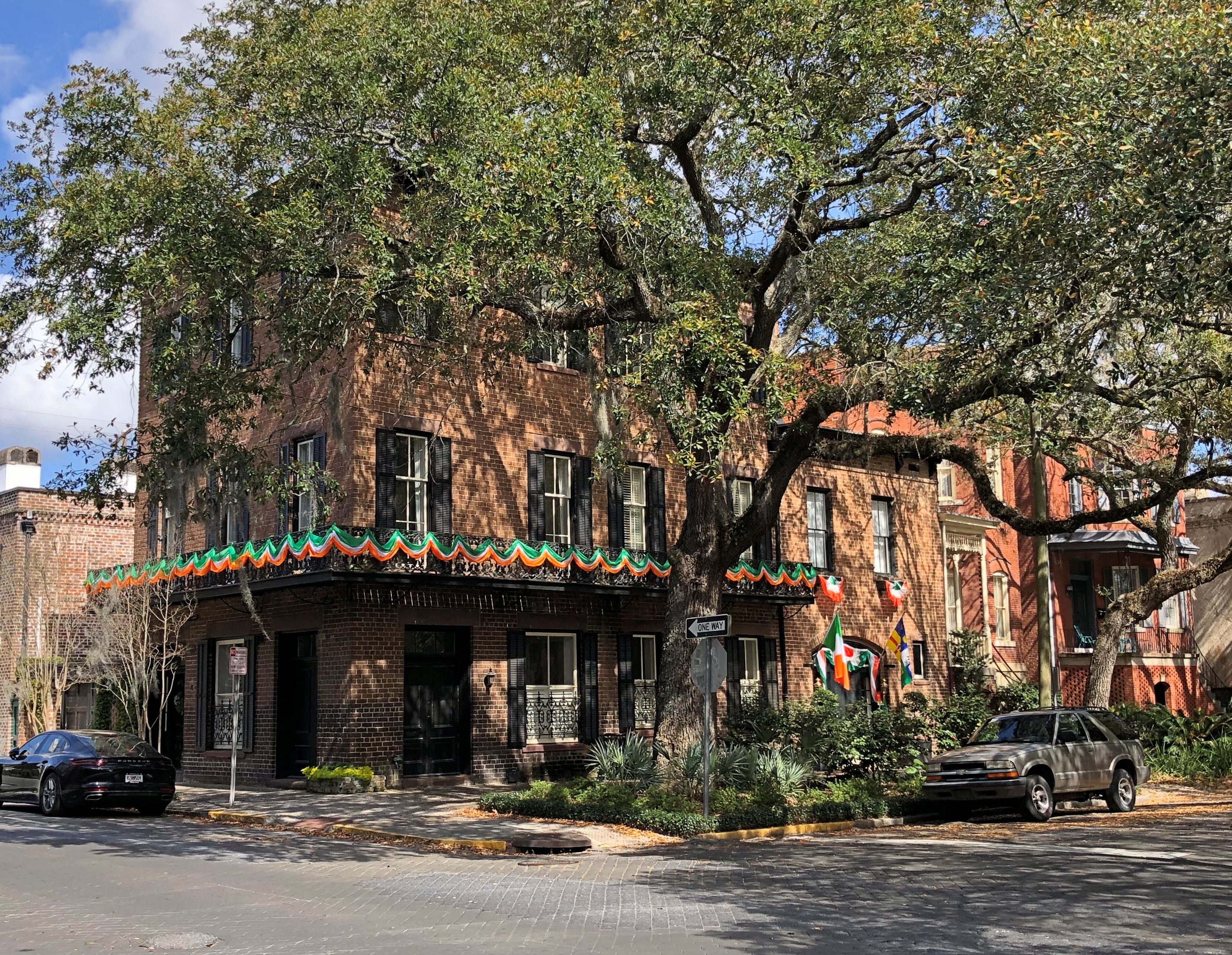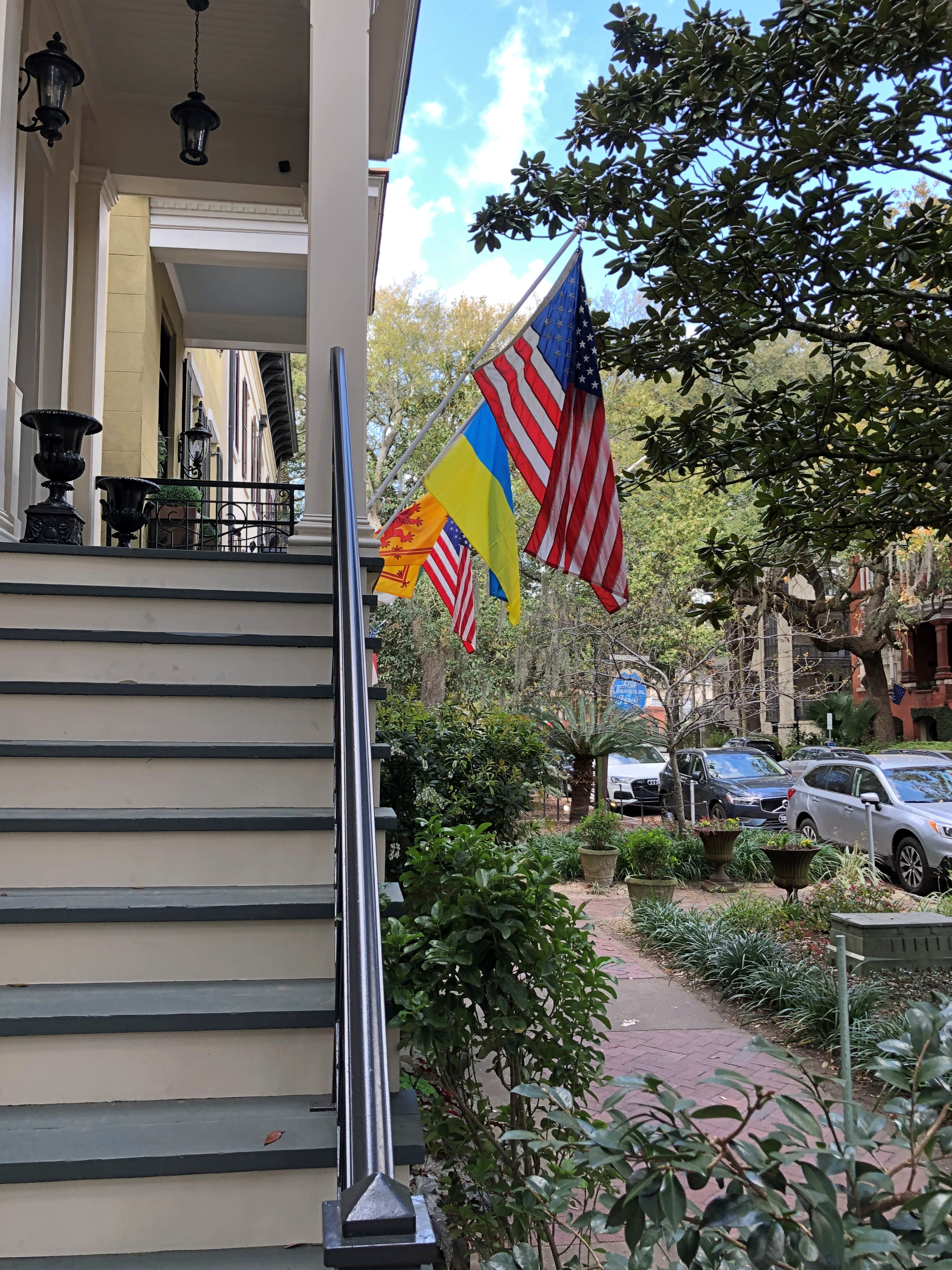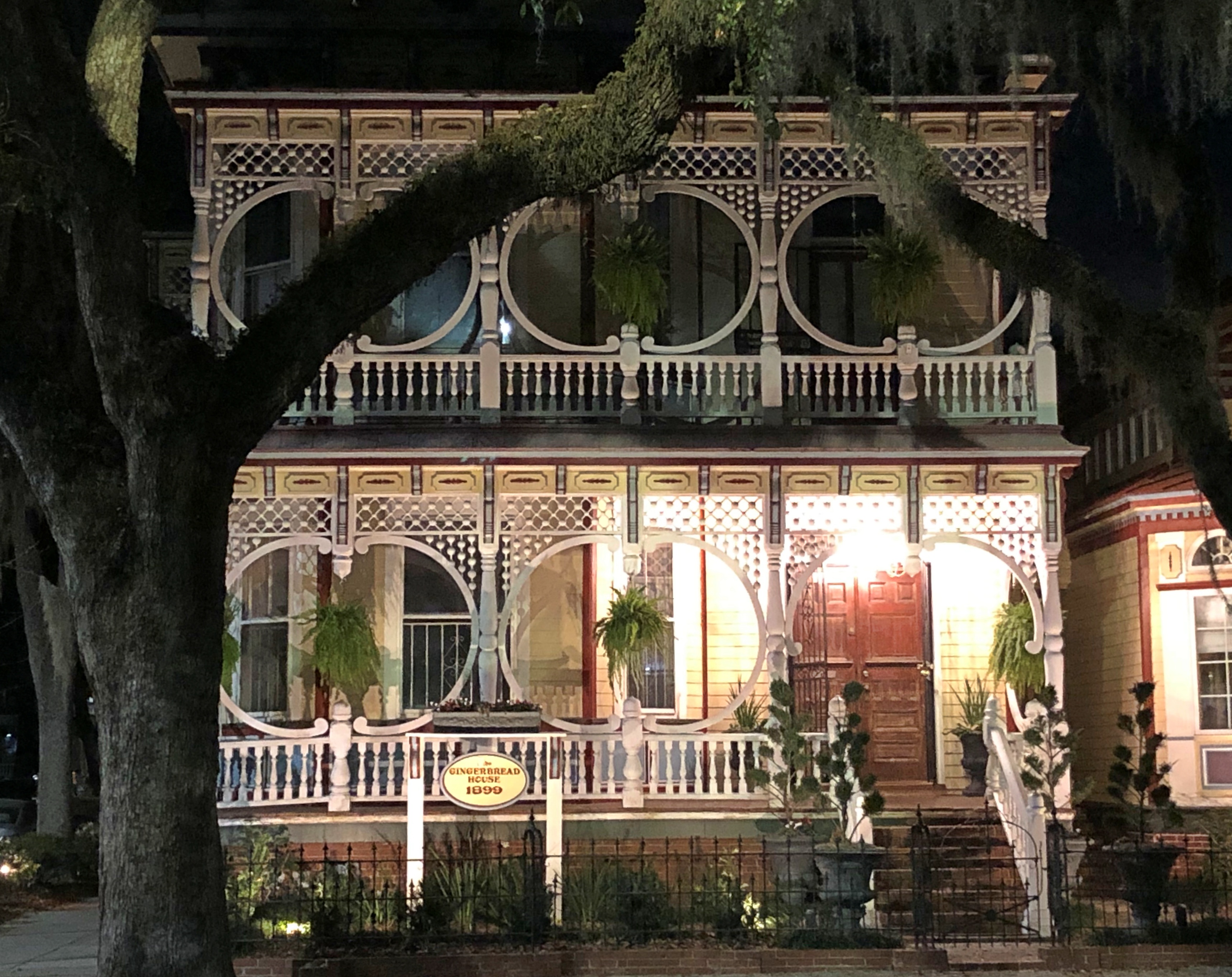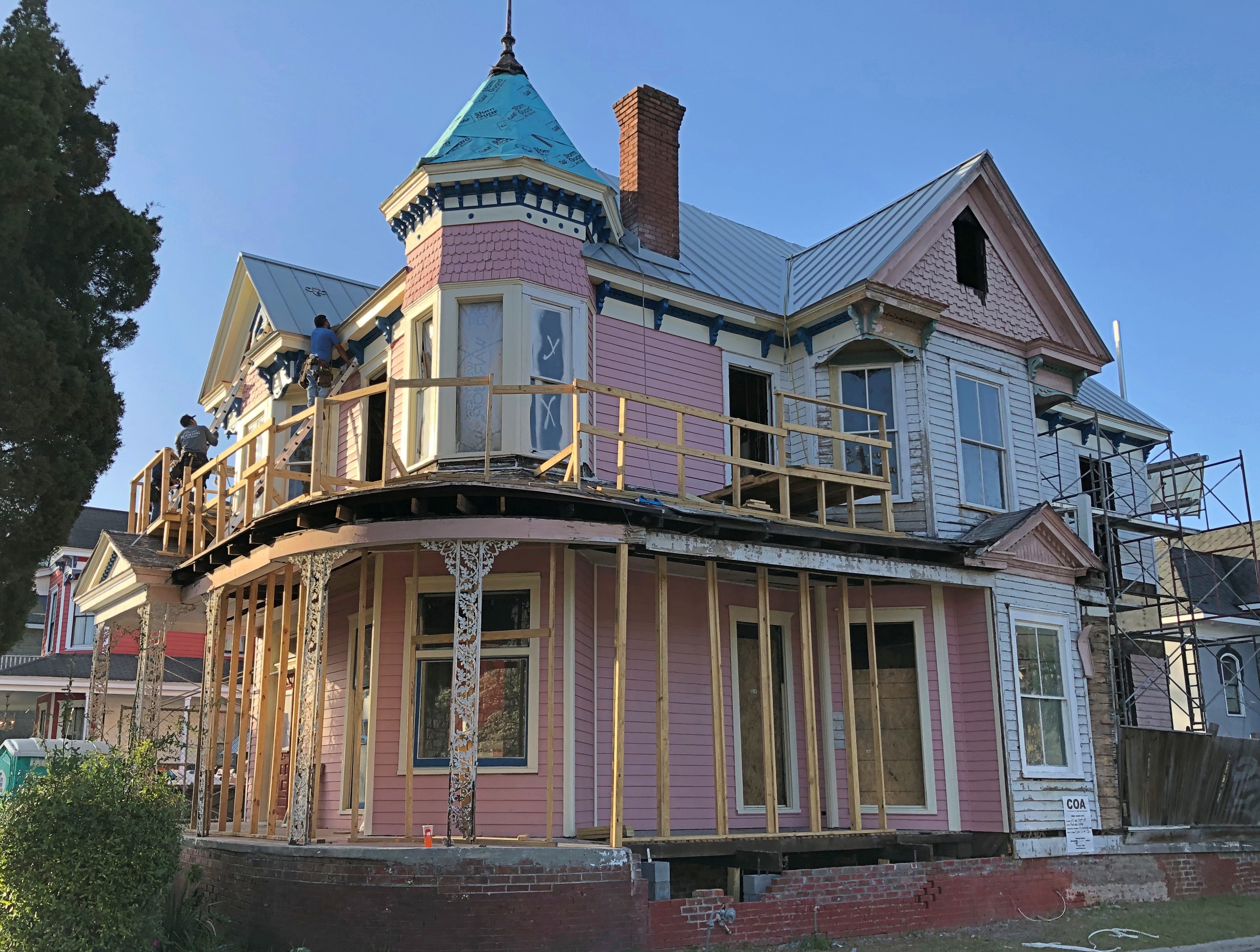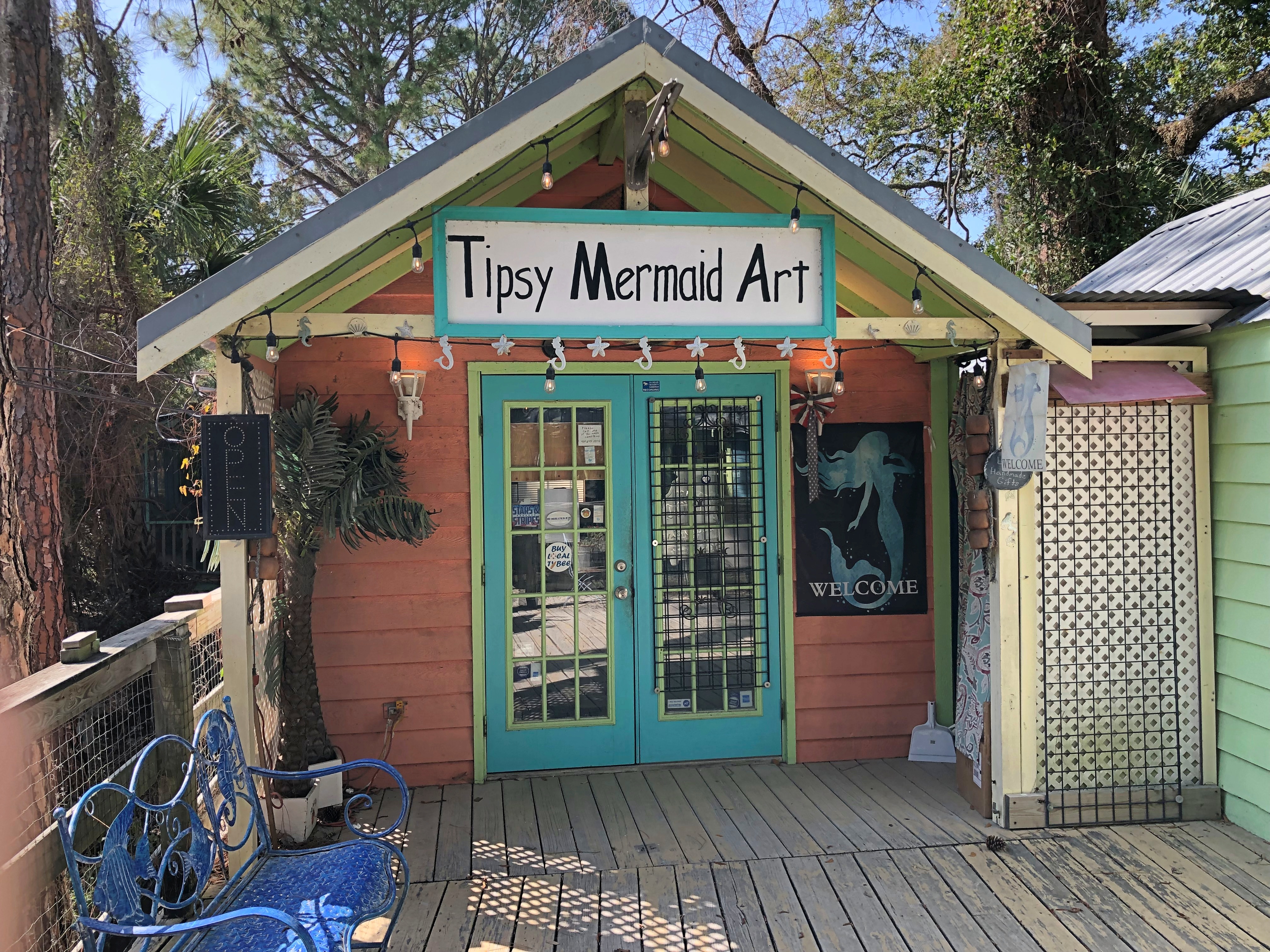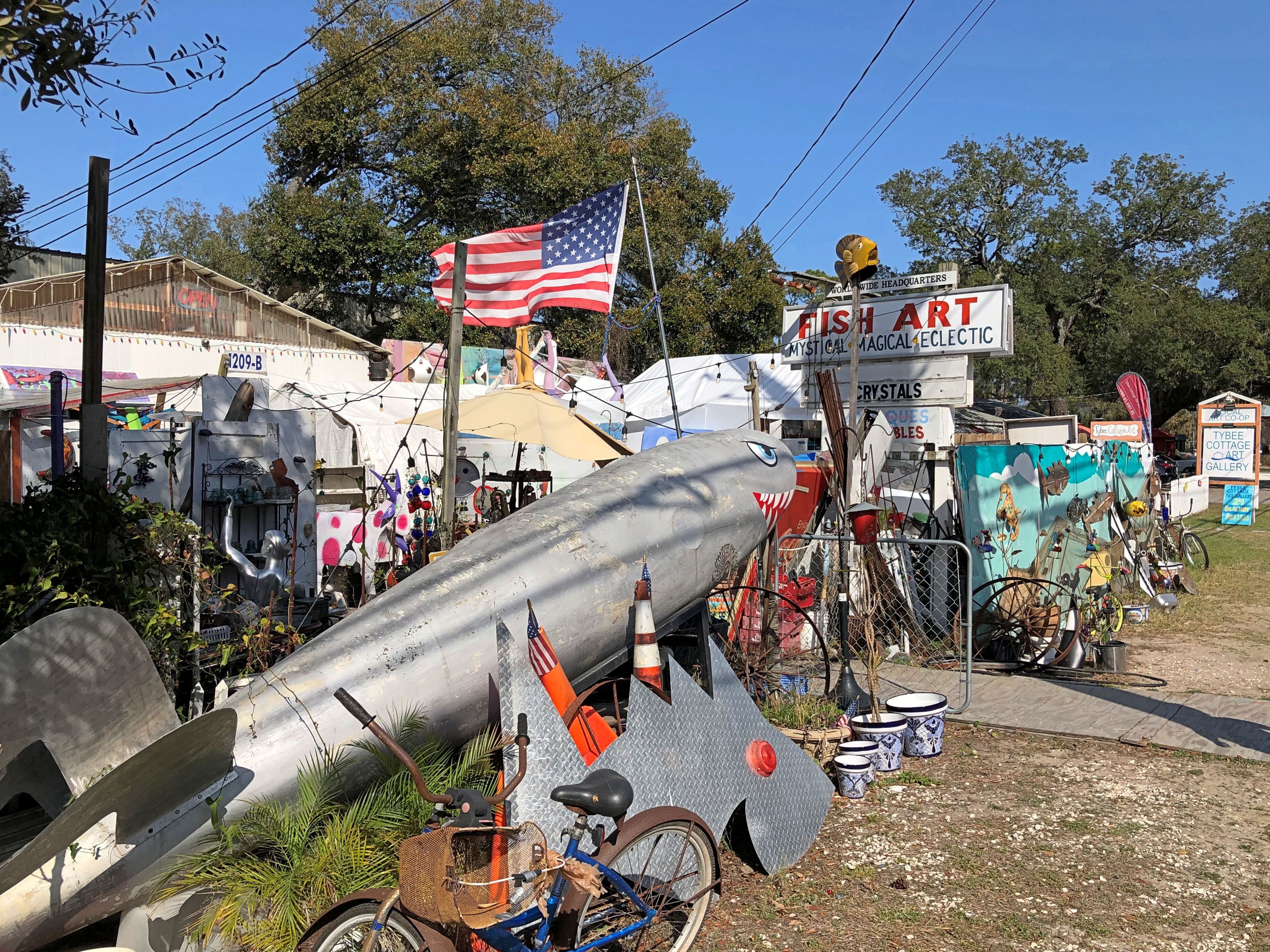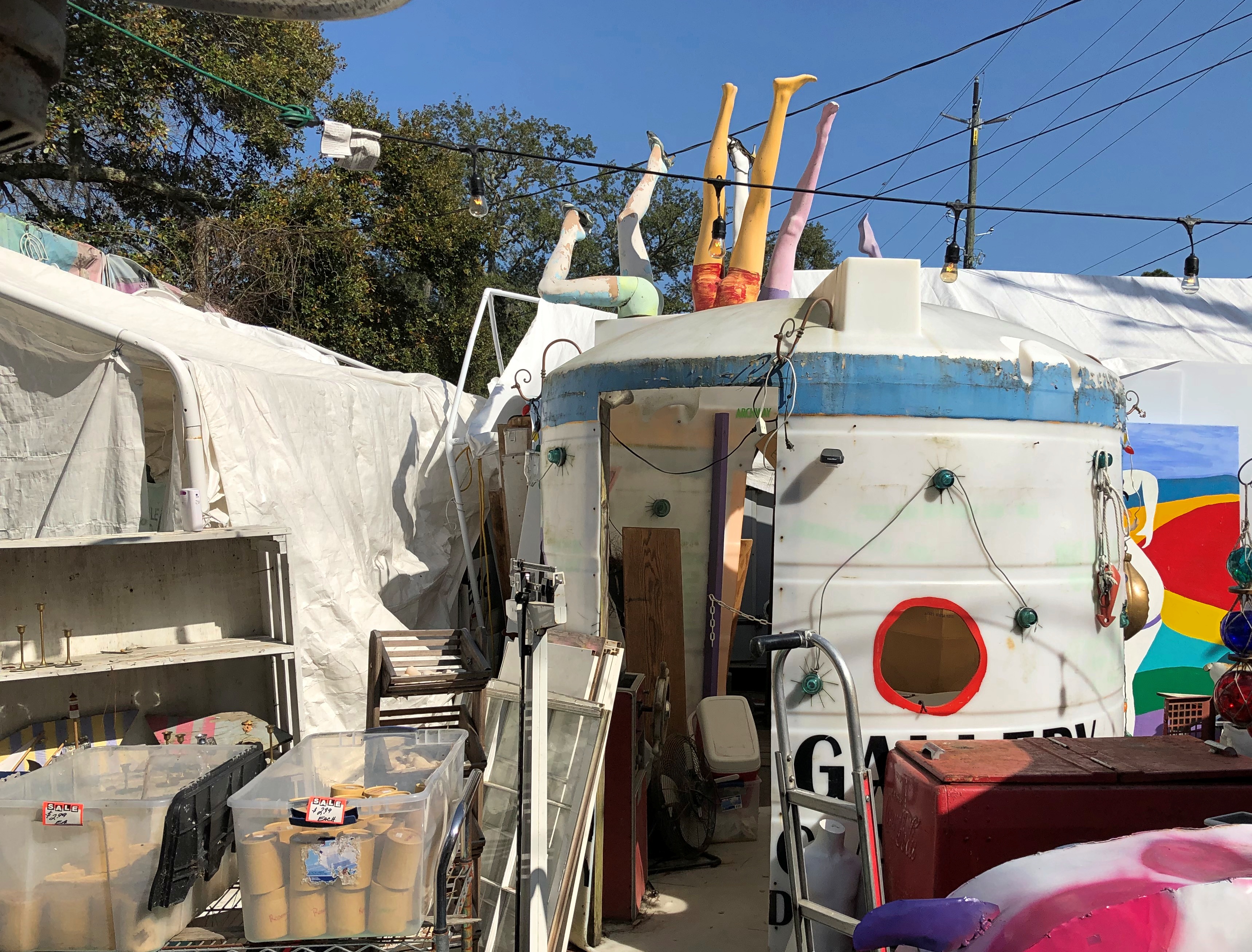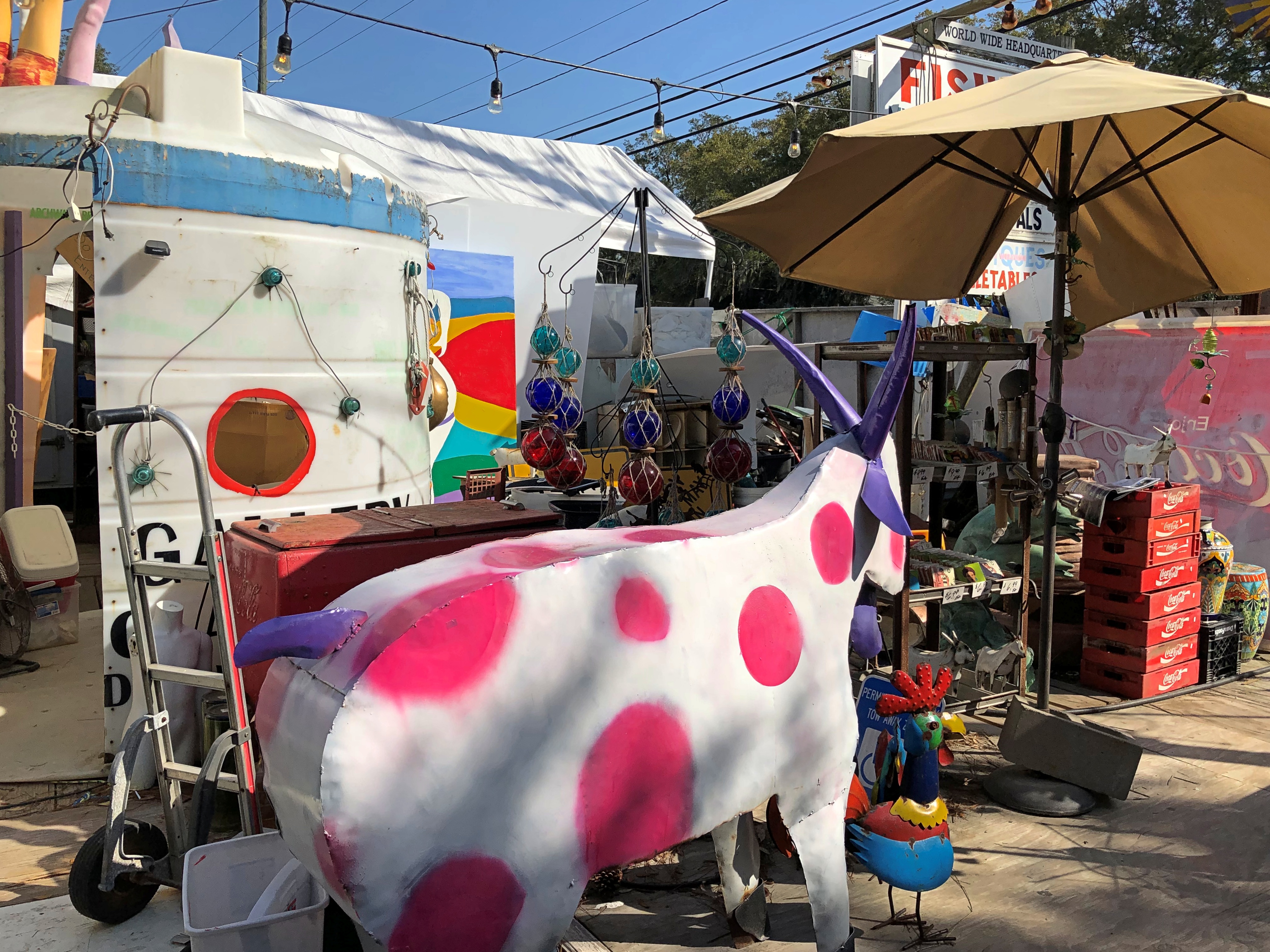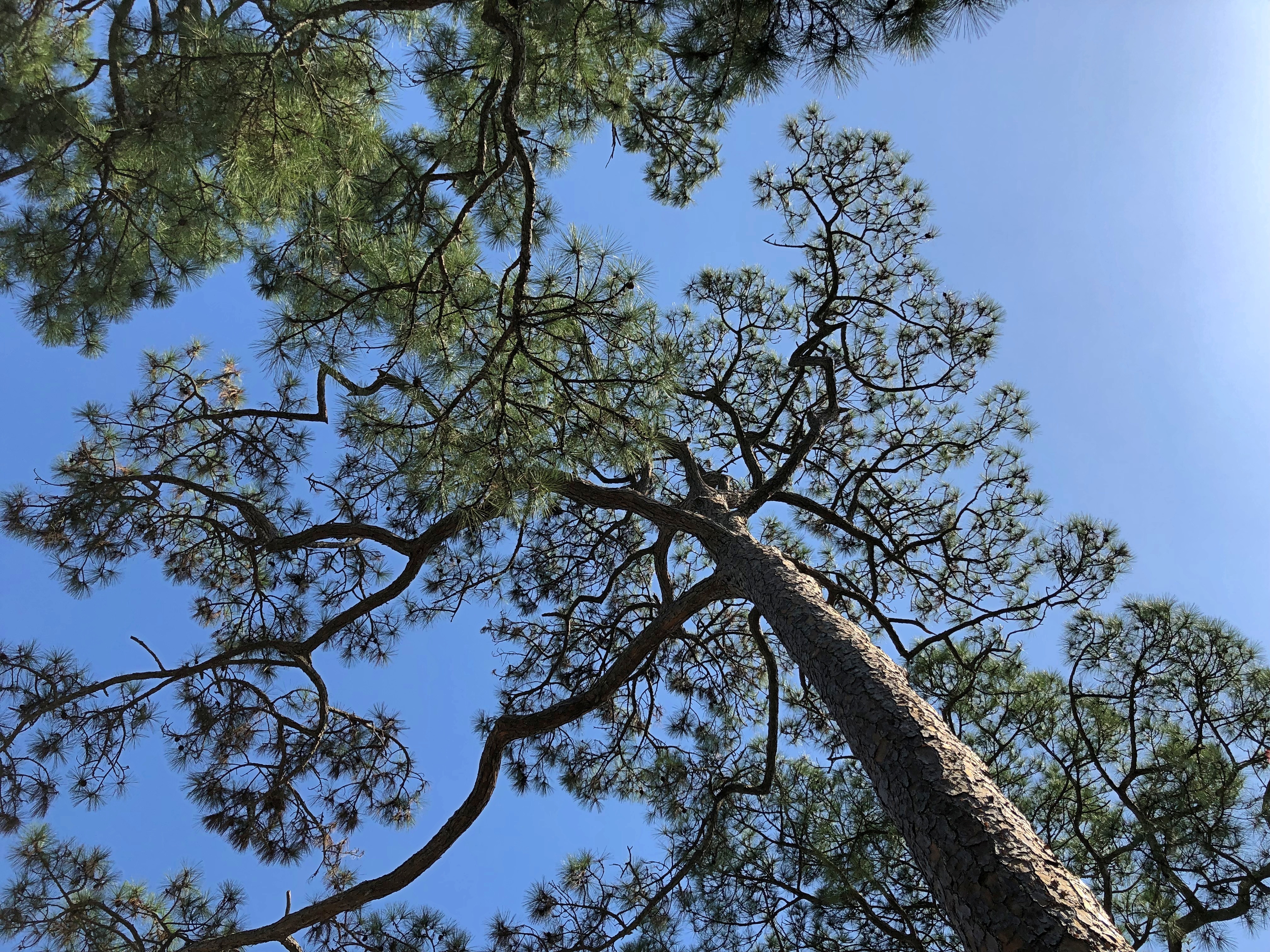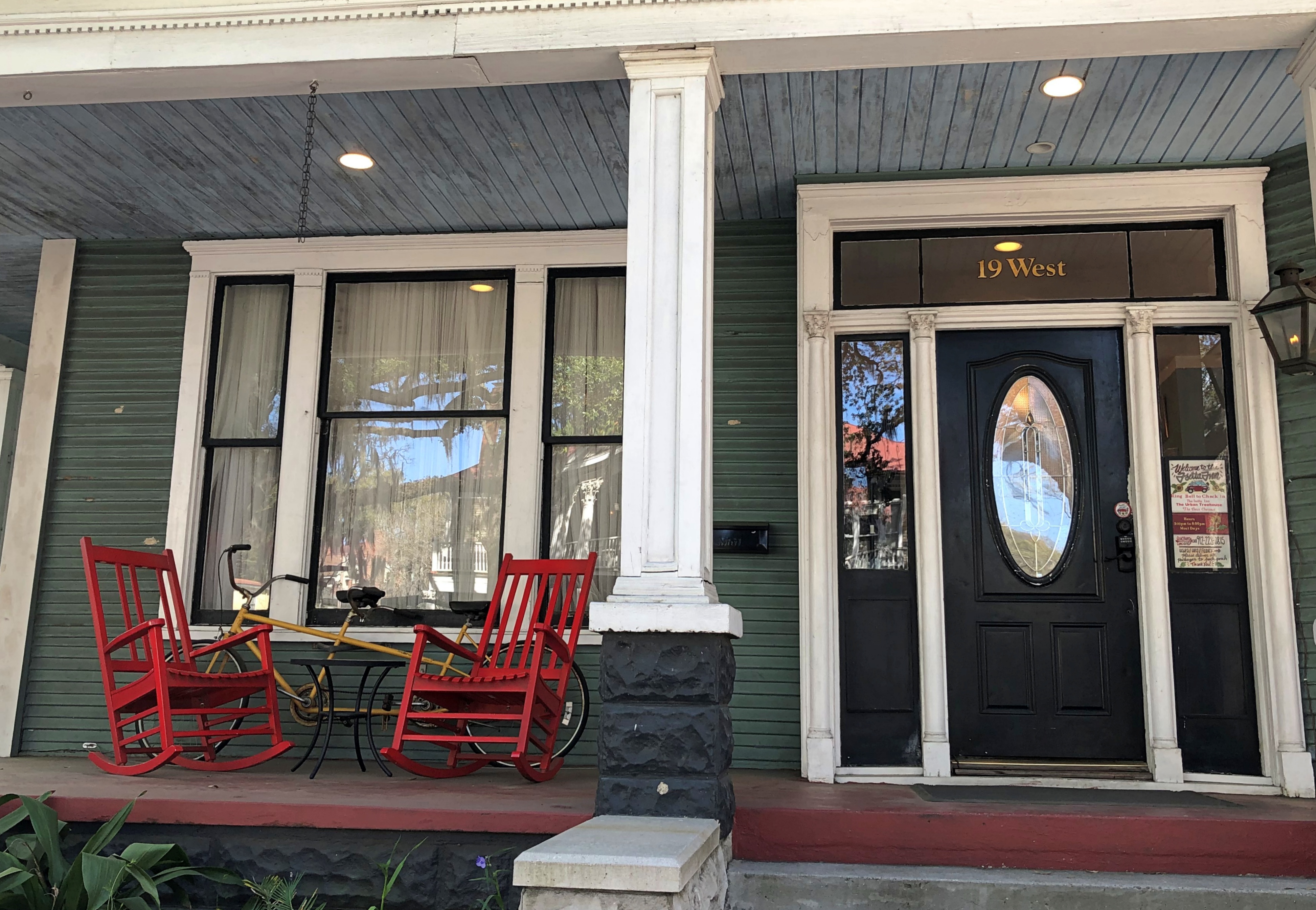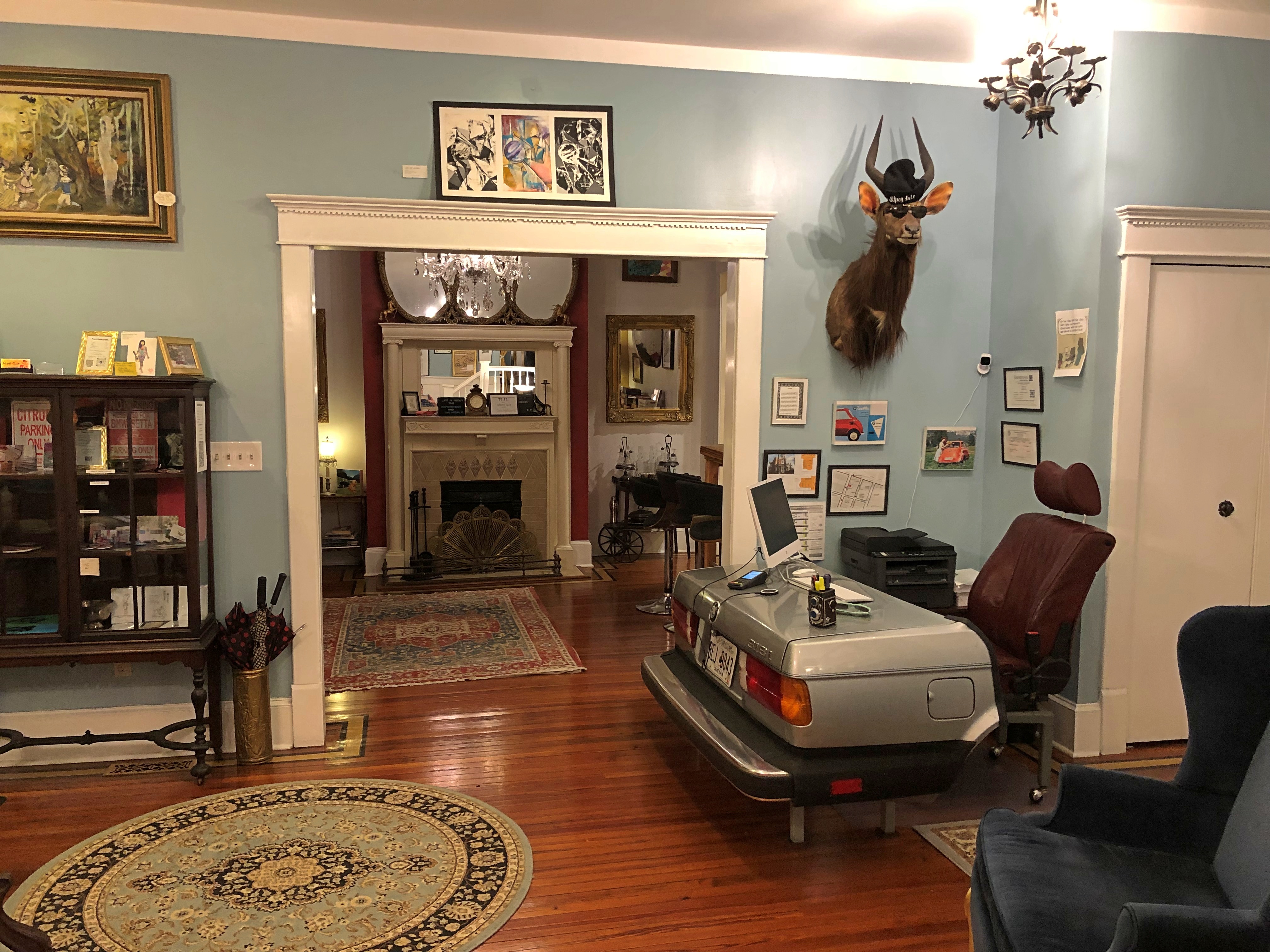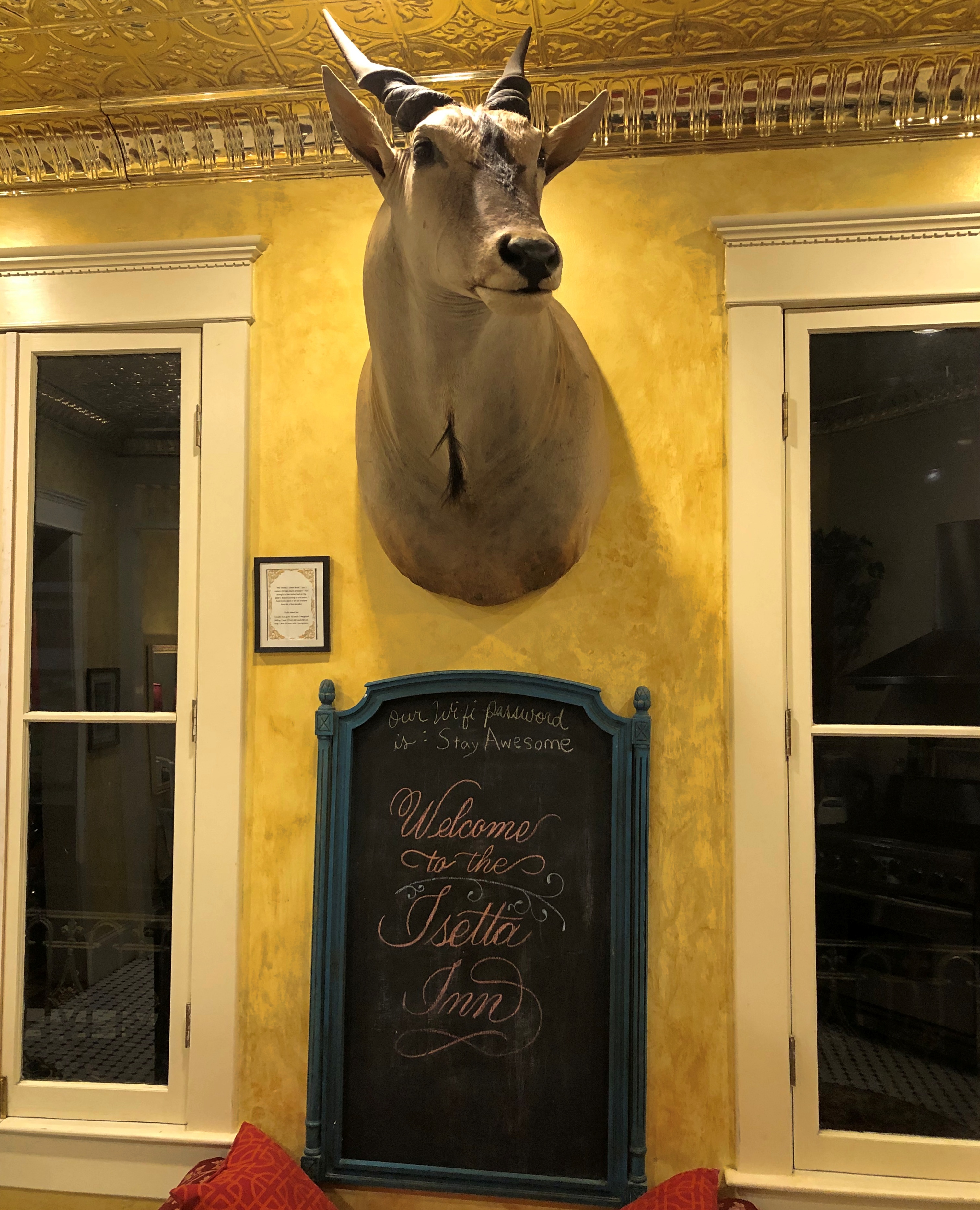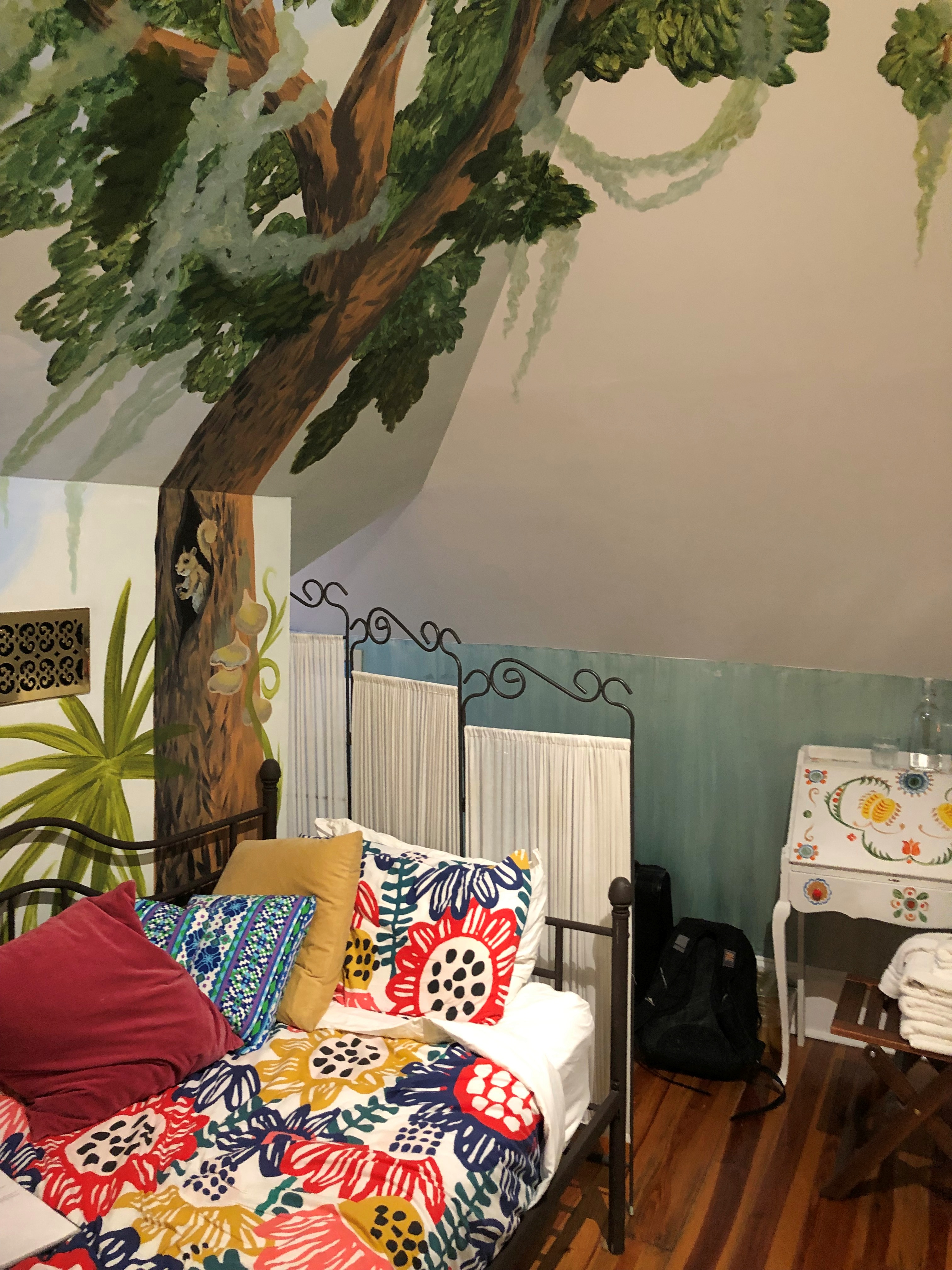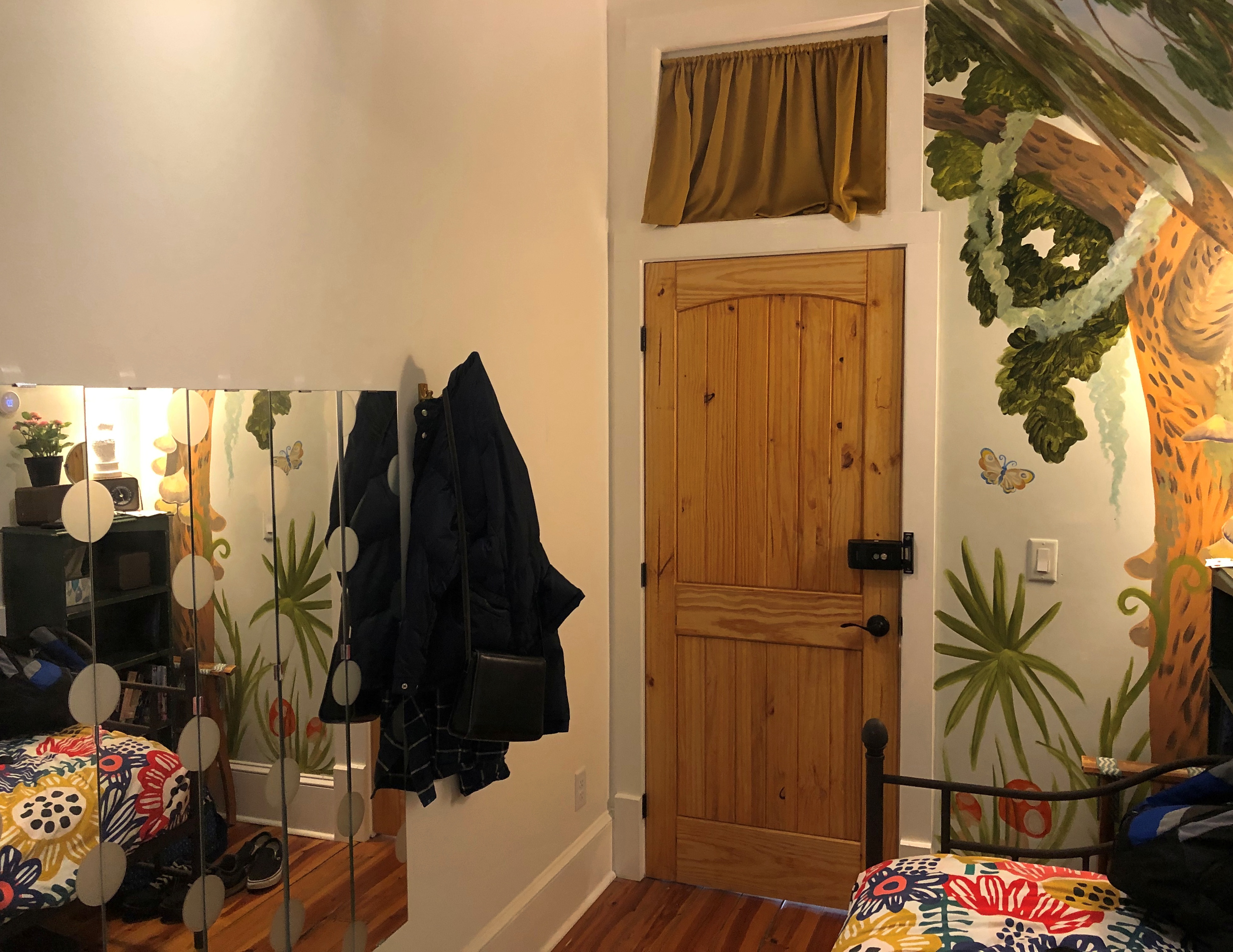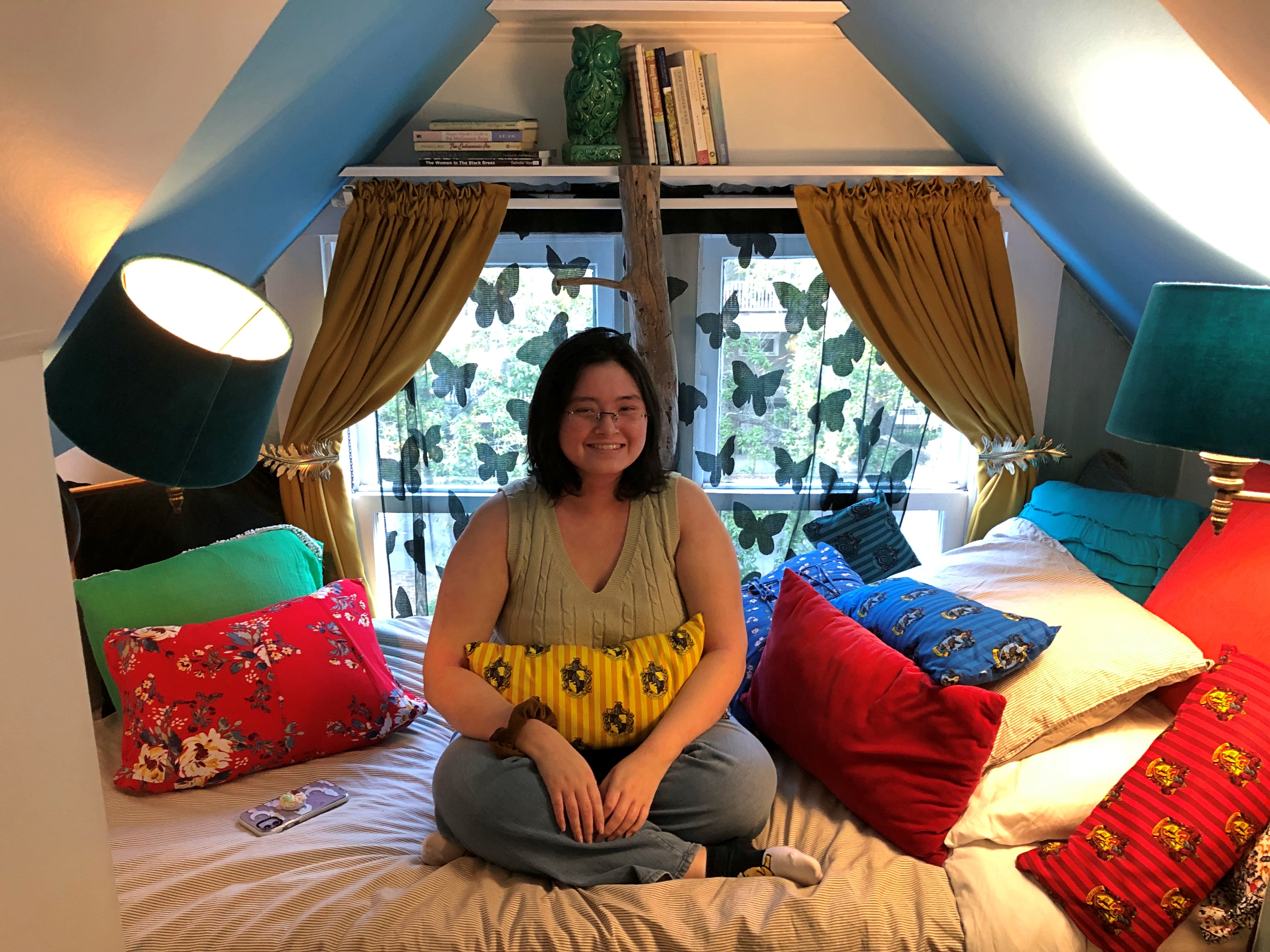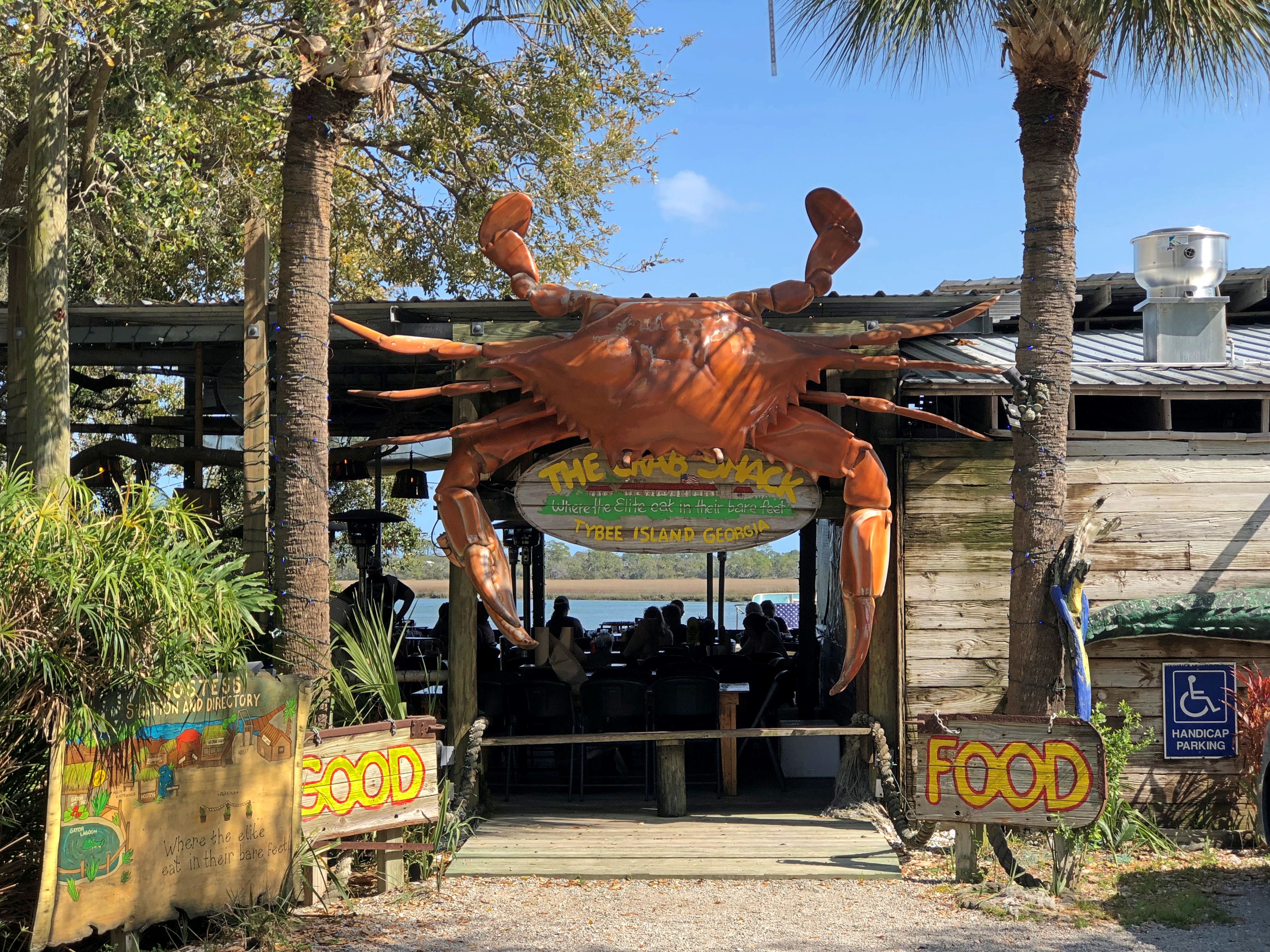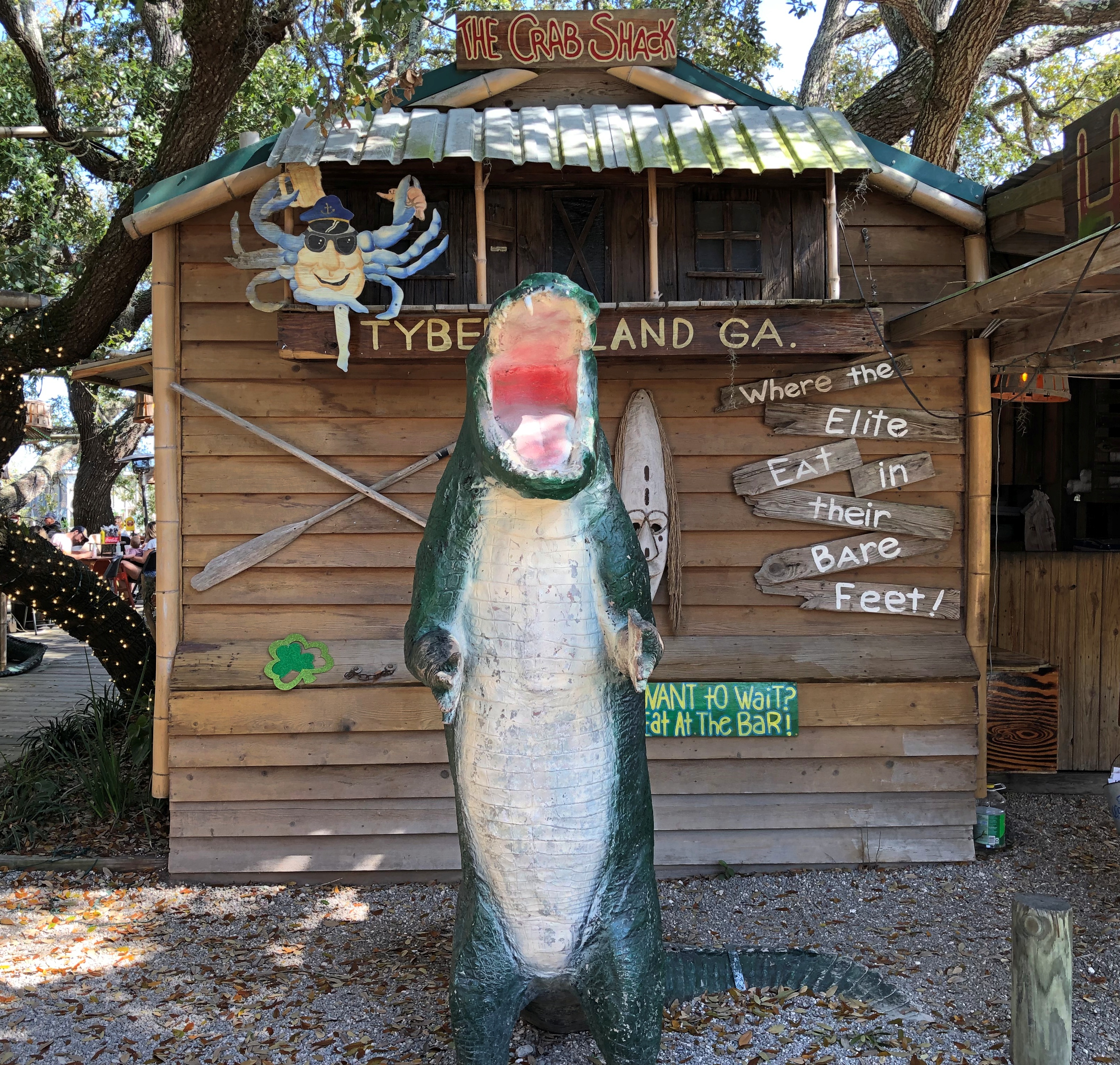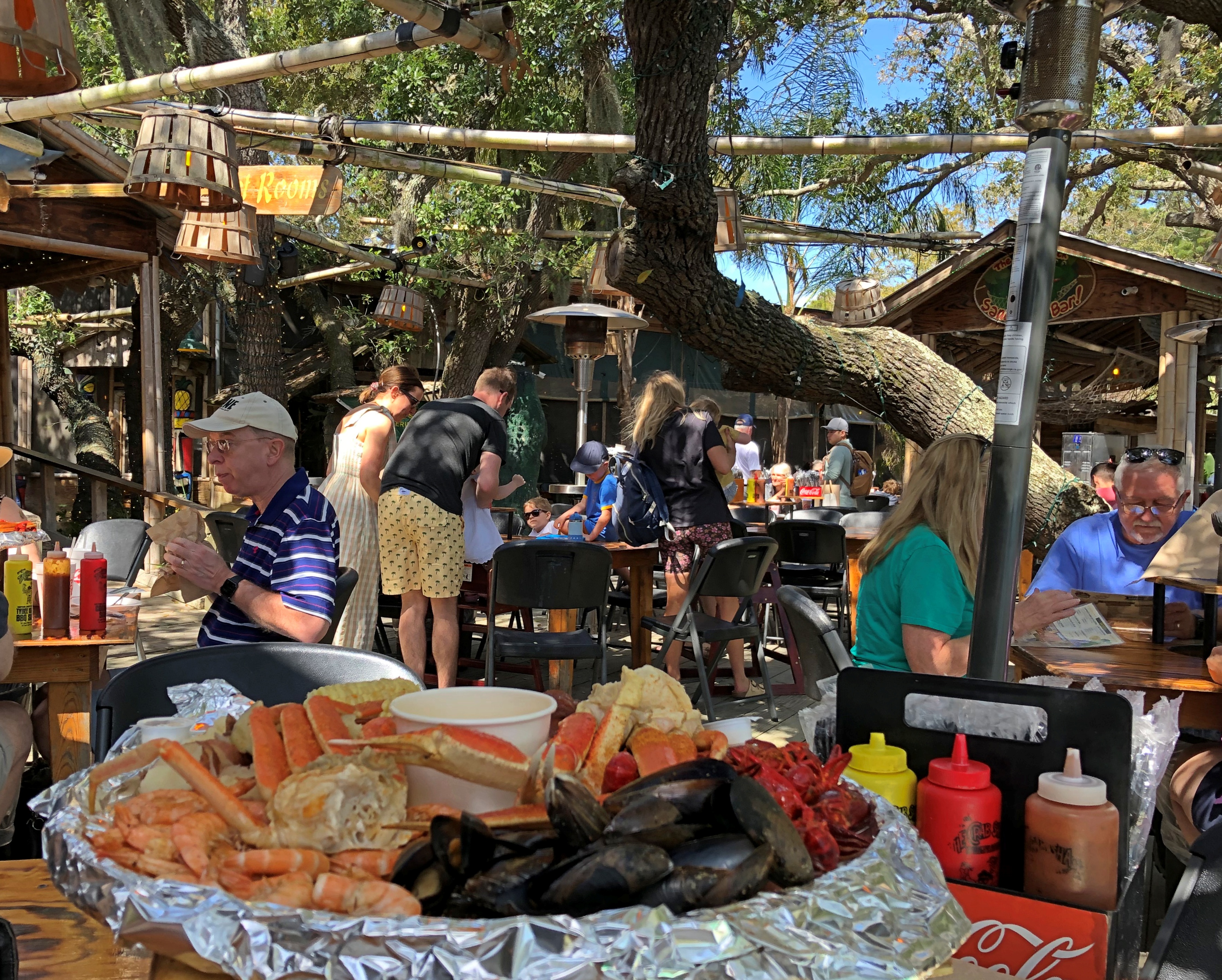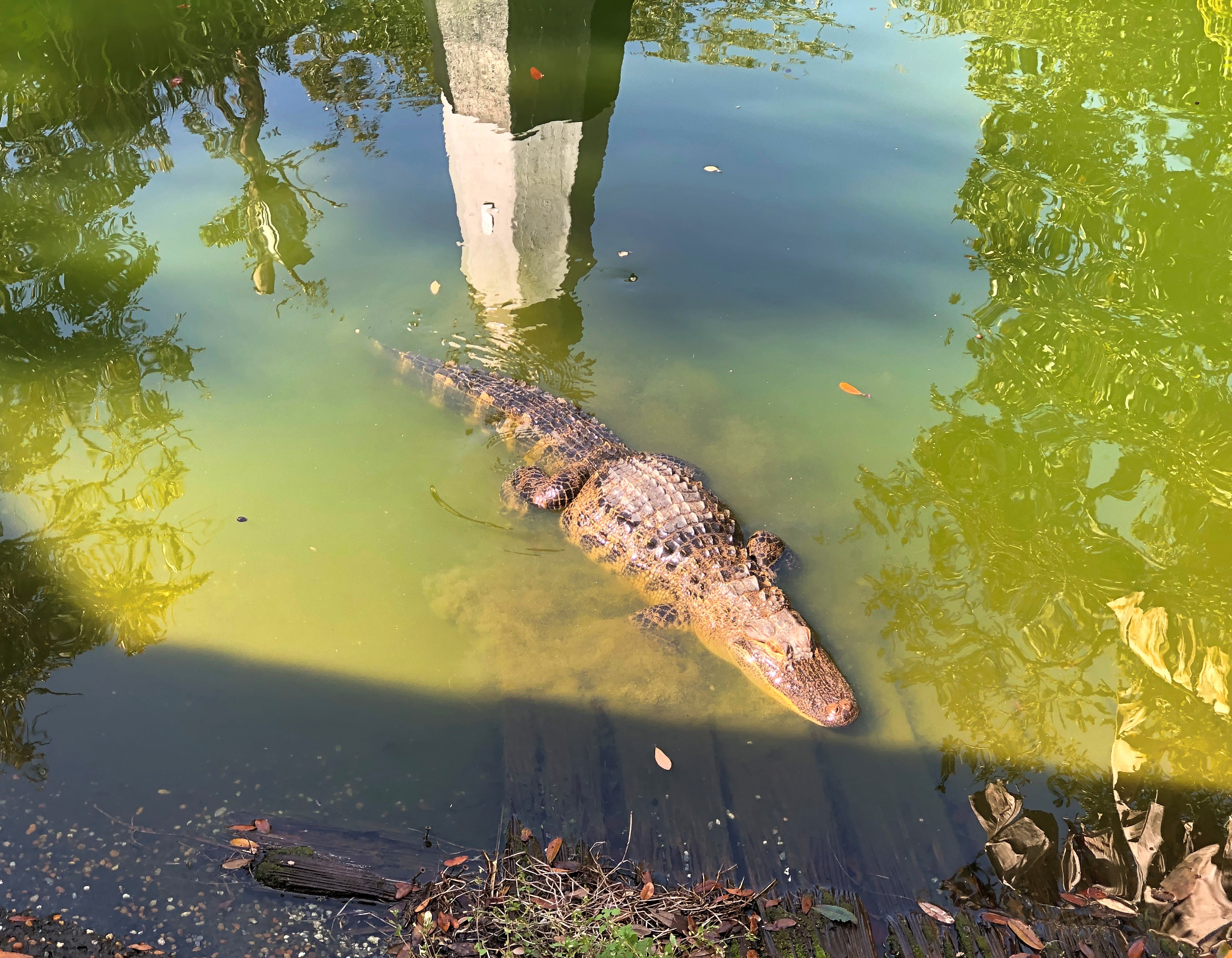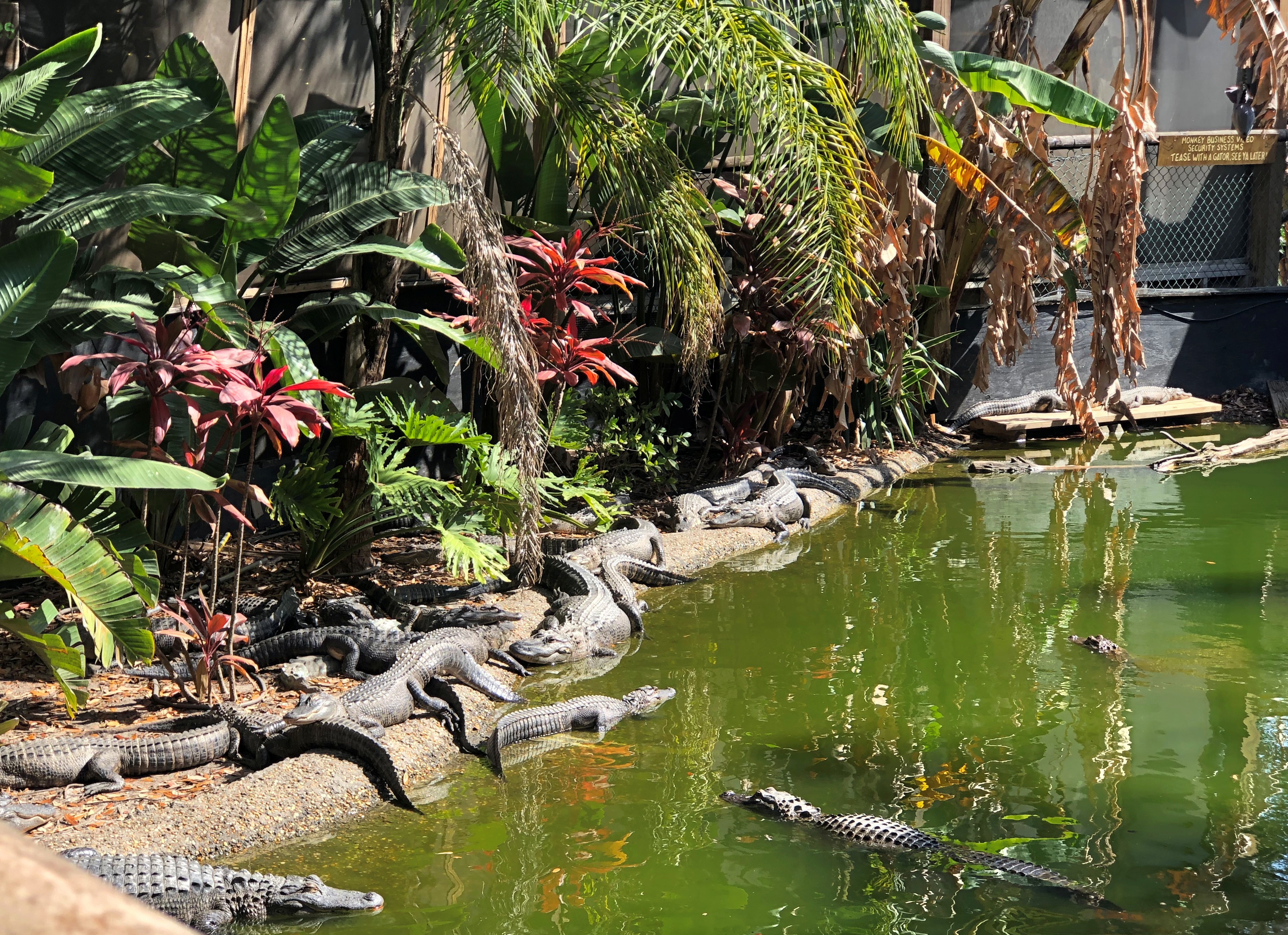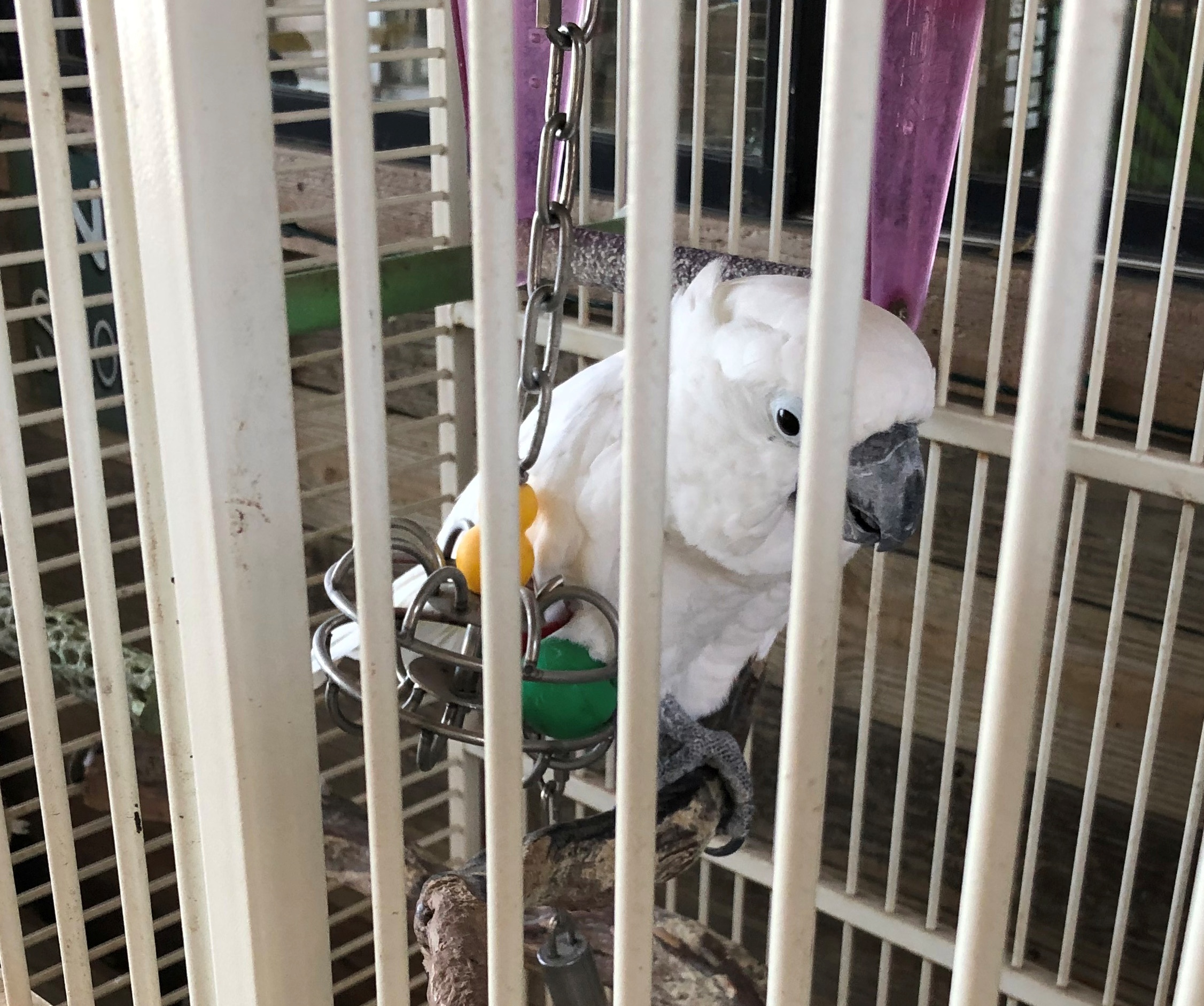No chance to see the aurora borealis here in northern Illinois last night, even if it was there to be seen. Yesterday was overcast all day, producing light but steady rain late in the evening and throughout the night, as far as I could tell.
Today was overcast as well, with light snow in the morning and again in the evening. So much for March going out like a lamb.
On Sunday, which was chilly but sunny, I took a stroll down Chicago Avenue for a few blocks. Chicago is a major east-west street, crossing the city and into the suburbs and running more than 12 miles, according to a Google Maps estimate. The eastern terminus is at Lake Shore Drive, but not before you pass such notable places as Michigan Avenue, the Chicago Water Tower and the Museum of Contemporary Art.
Where I walked, roughly 2300 W. to 2000 W. Chicago — about four miles west of Lake Michigan — the street is the commercial hub of Ukrainian Village, though not everything on the street has anything to do with Ukraine or its diaspora. Such as Fatso’s Last Stand. That’s very Chicago; it could be just about anywhere in the city.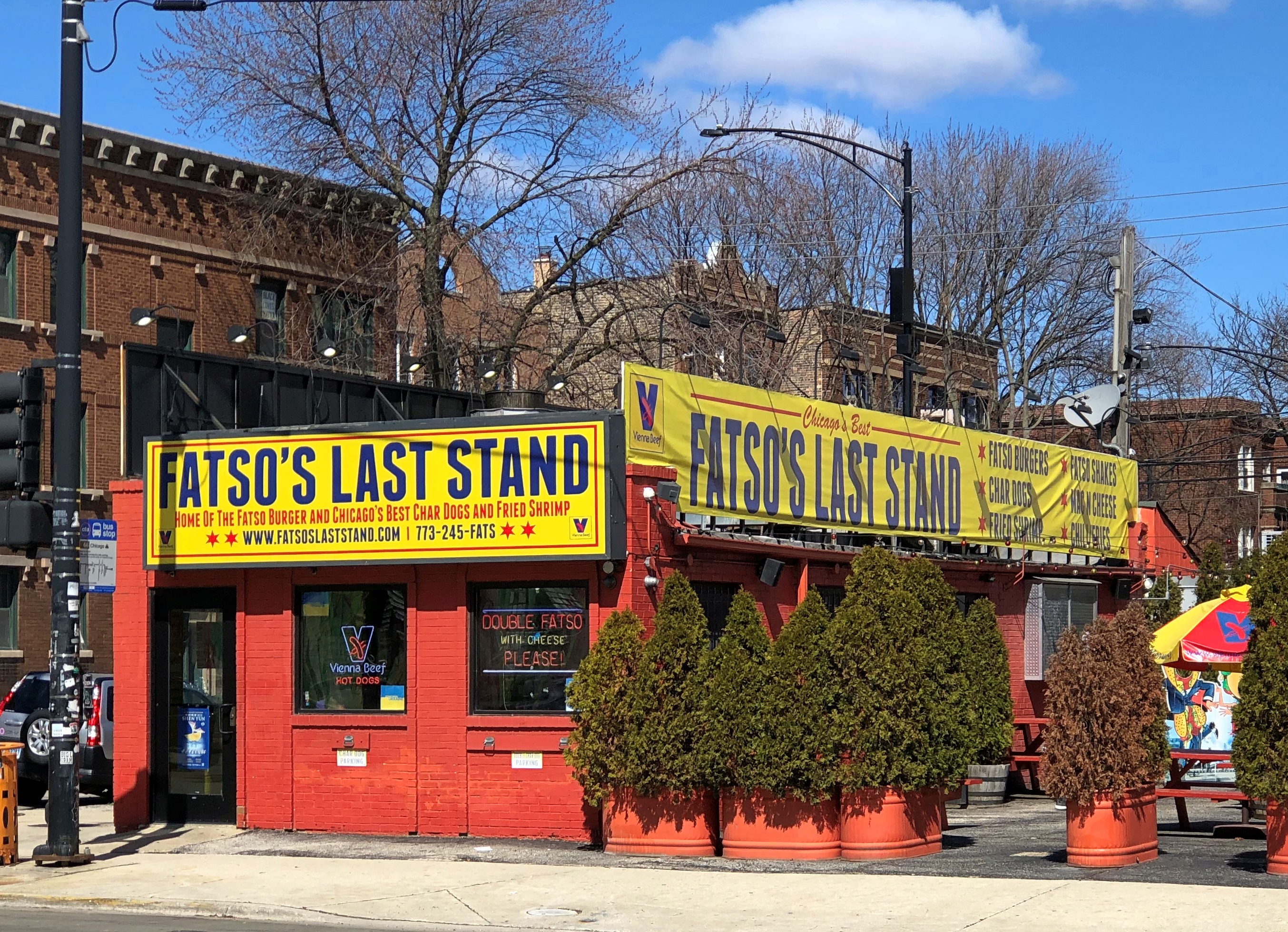
One of two locations of this name in Chicago, owned by an entity that has other restaurants and bars in the city, but also in New York and Charleston. I ought to try it sometime. I like a hot dog stand that has its own mural.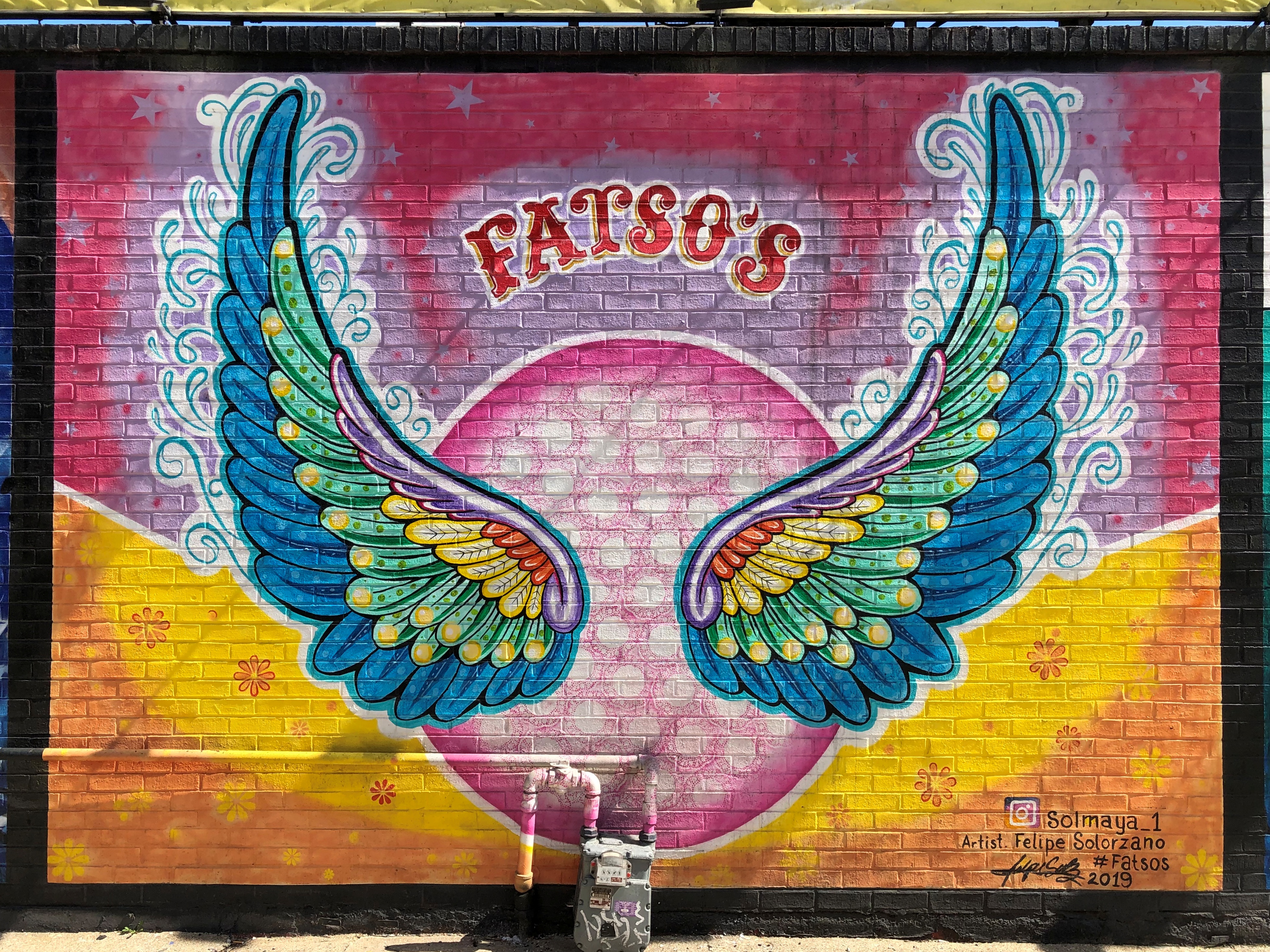
It’s on the wall facing Oakley Blvd., which crosses Chicago Avenue at that point. The artist, one Felipe Solorzano, has some images on Instagram. It didn’t occur to me until I looked at them that people pose in front of the wings. I’ve seen that before, but not in Chicago.
The wings form the center panel in a triptych of paintings, if that term is correct for murals. Anyway, there are three distinct paintings on the Fatso’s wall. I didn’t take a picture of all of them, but Google did.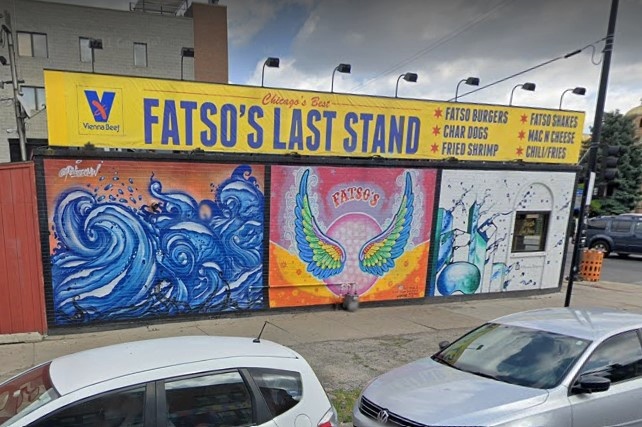
The new mural is dated 2019. That synchs with the always-useful Street View, which tells me that the current mural appeared between June 2018 and August 2019. Before that, there was a different mural.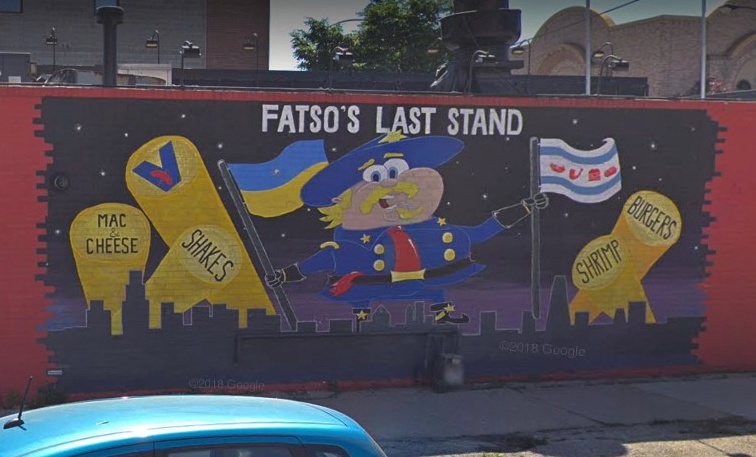
How to describe that? A Ukrainian-Custer-hot dog stand vibe. Perhaps the owners felt obliged to cancel Custer, though I doubt most passersby gave it much thought. In any case, the earlier mural appeared some time after October 2015. Before that, just a red wall.
Across Chicago Avenue from Fatso’s is another mural. I don’t have any information about its creator, but he or she has some talent.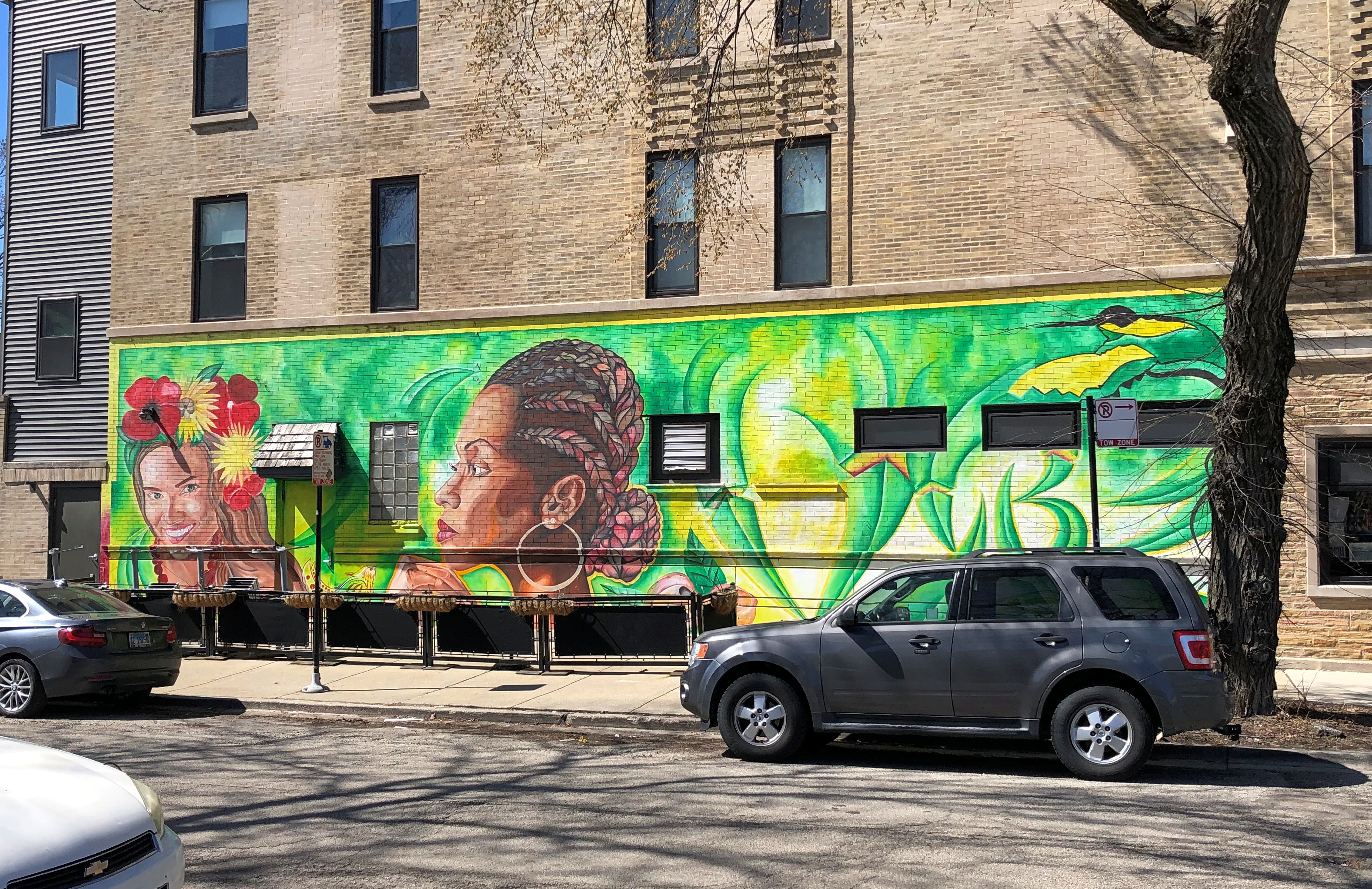
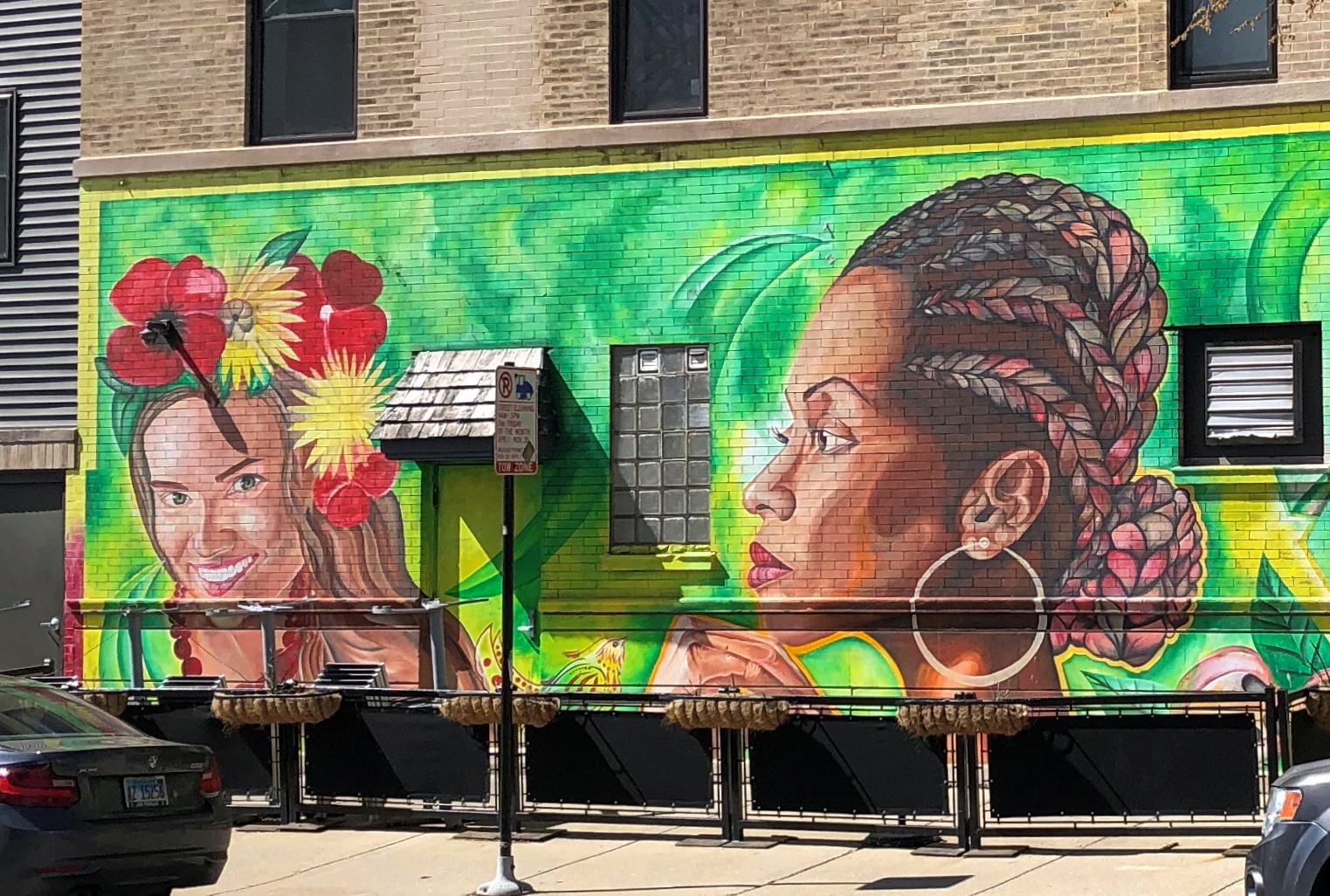
This one appeared between August 2019 and July 2021. I believe the mural vogue that seems to be under way in Chicago is a good thing. Spices up the city.
Elsewhere on the street, I took a look at some smaller commercial buildings, which are sinews of an urban neighborhood like Ukrainian Village: a shop on the first floor, an apartment or two or more above, perhaps where a shopkeeper used to live, and might still live in some cases. These buildings usually don’t command much attention, and maybe they don’t need to, but they can actually be fairly aesthetic. 
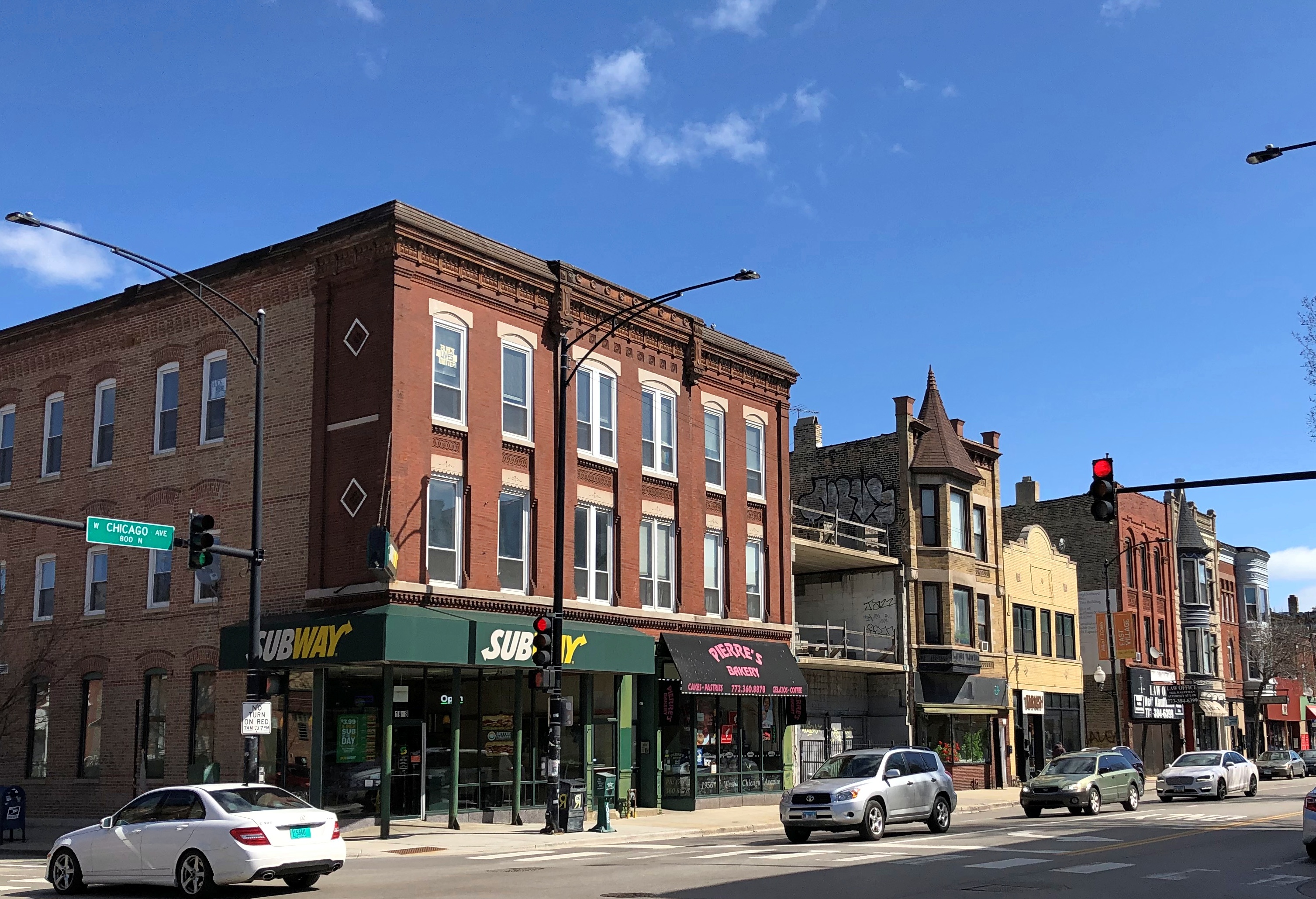

I like that small one, tucked in the middle.
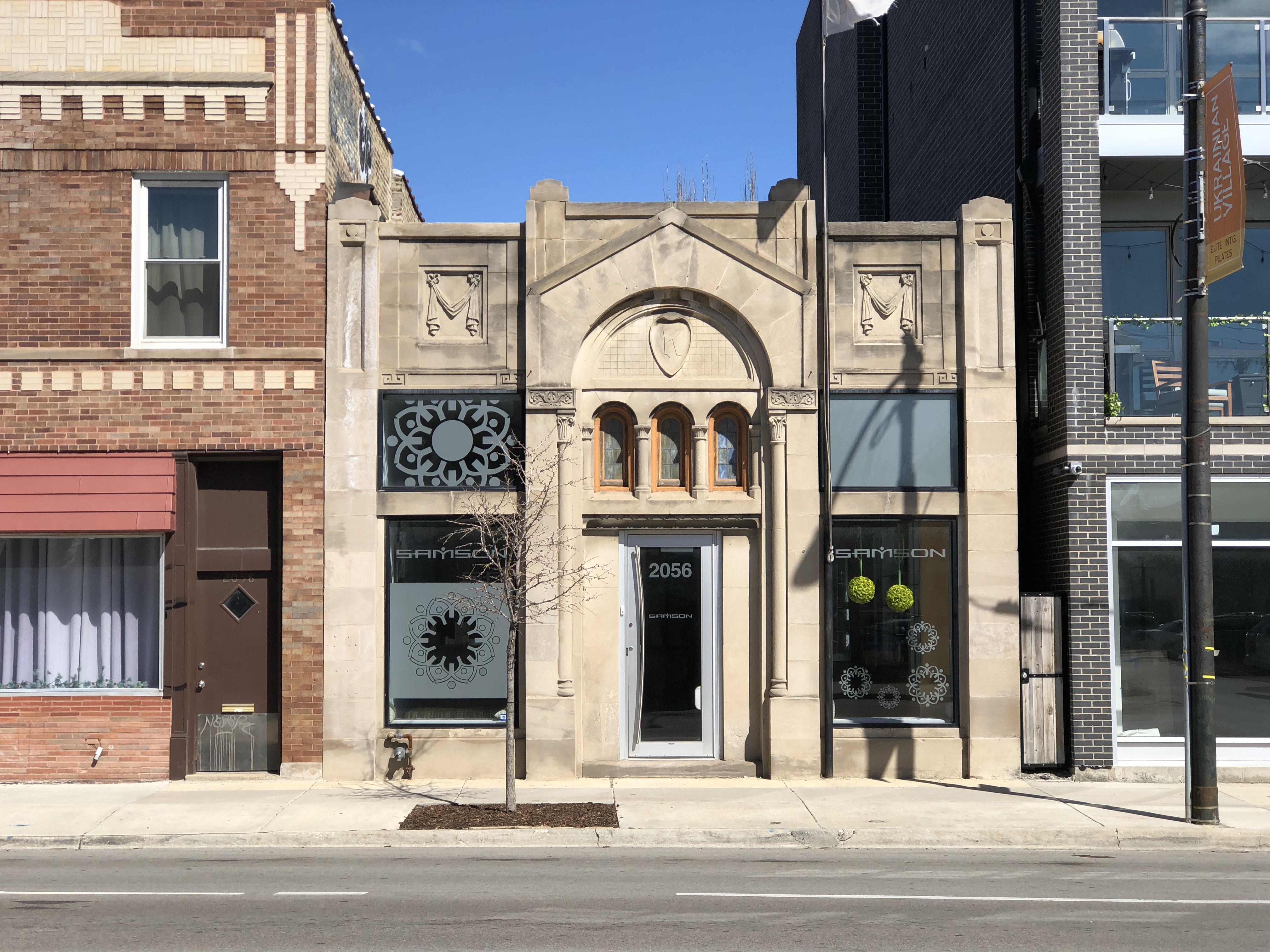
Another mural. Little information on this one either, but that’s hardy necessary to enjoy it.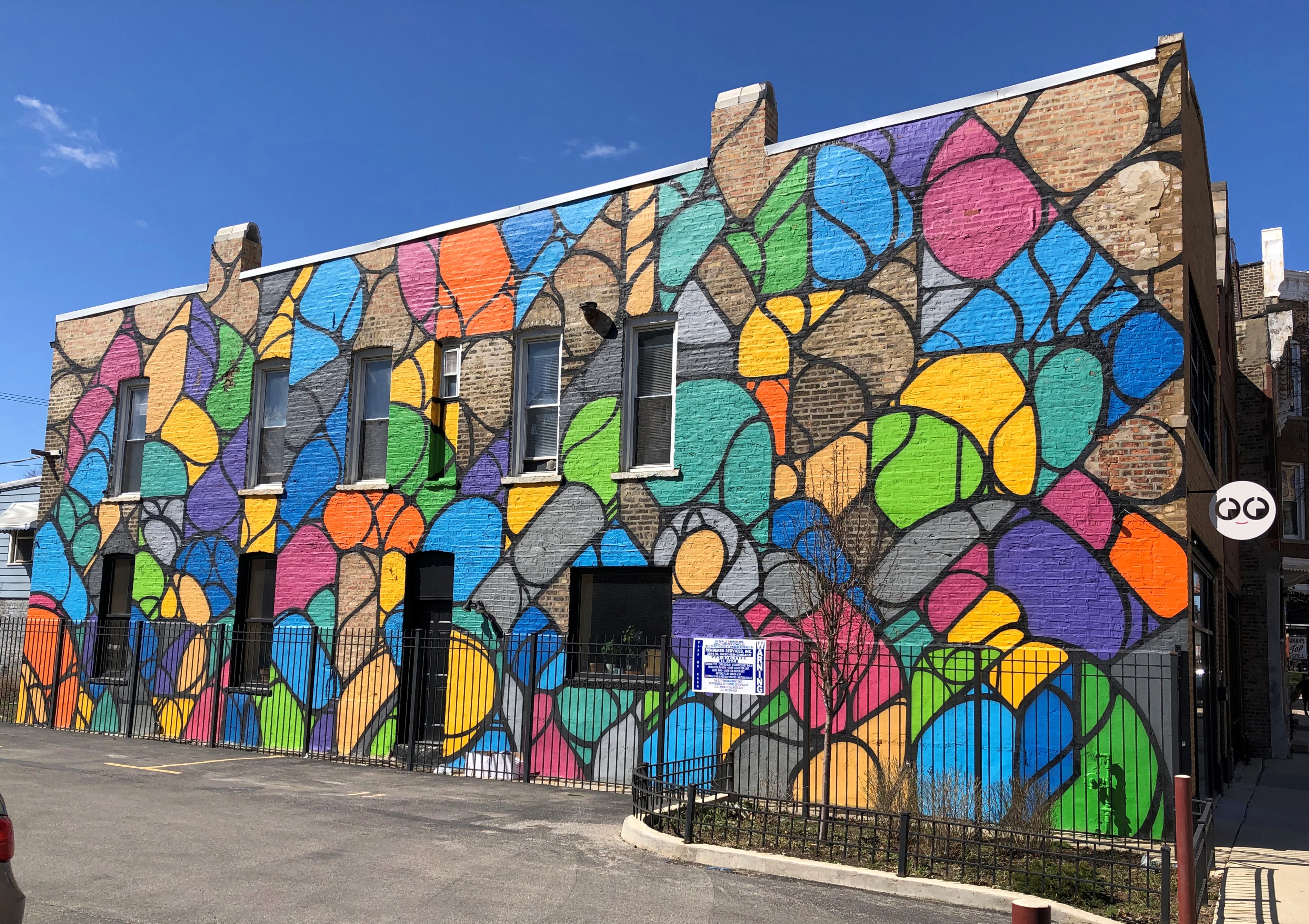
I see on Street View that the mural appeared between August 2019 and August 2021, the same span when the first floor of the building went from being occupied by a hair salon — knocked off by the pandemic, probably — to being a vintage clothing store called the Stoop.
Not on Chicago Avenue, but a block to the north on Rice St. I wandered by it as well.
This is home to St. Nicholas School of the Arts, which is affiliated with the St. Nicholas Ukrainian Catholic Cathedral. A cornerstone gives the building date as 1935, but that’s all I know. Handsome structure, though.
